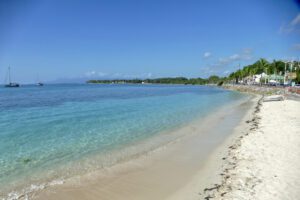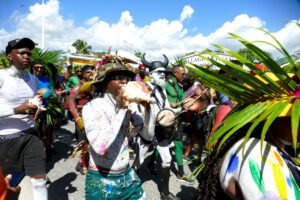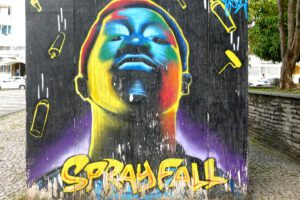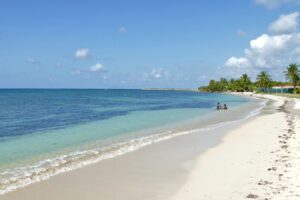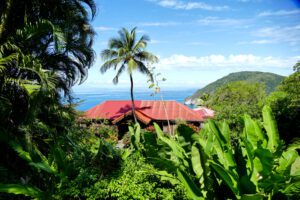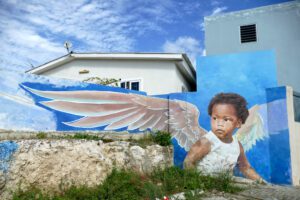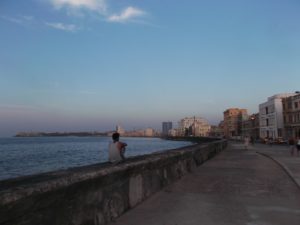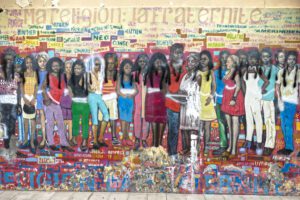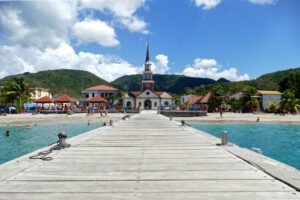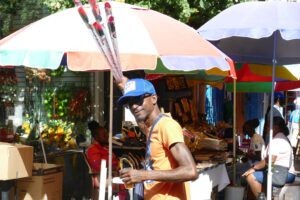The main islands of the Guadeloupe archipelago spread their wings in the Caribbean Sea like a beautiful butterfly. These two parts are so different that it is hard to believe that they are in fact the same piece of land. While the western part that goes by the name of Basse Terre is mountainous, overgrown, and rough, the eastern wing called Grand Terre attracts visitors with gently rolling hills, settlements steeped in history, colonial architecture, and, above all, countless dreamy bays lined with sea grape and coconut palms.
So come on, let me introduce you to the best places in Grand Terre that you can even explore comfortably by public bus.
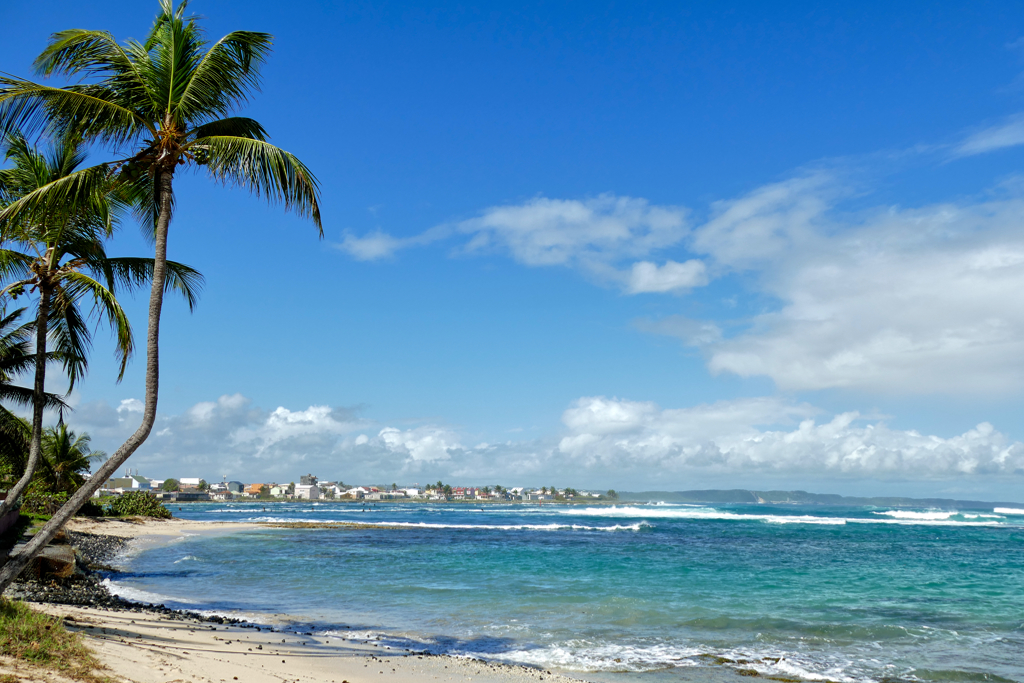
Two Very Different Wings of the Same Butterfly
As a matter of fact, Guadeloupe is not one island, but an archipelago consisting of six inhabited and other tiny uninhabited isles. The two main islands are Basse Terre and Grande Terre. They are separated from each other by the narrow Rivière Salée strait. Amazingly, it is only around 50 meters wide at its narrowest point. In close proximity to the main islands are Marie Galante, La Désirade, Îles de la Petite Terre, as well as the only partly inhabited archipelago of Îles des Saintes.
Like in the entire region, life in Guadeloupe changed dramatically from the 17th century onwards. That was the time when colonial rulers arrived from France. After they had gradually wiped out the local population, they abducted men and women as slave laborers from the west coast of the African continent in the infamous triangular trade since they needed farmhands for their sugar cane plantations.
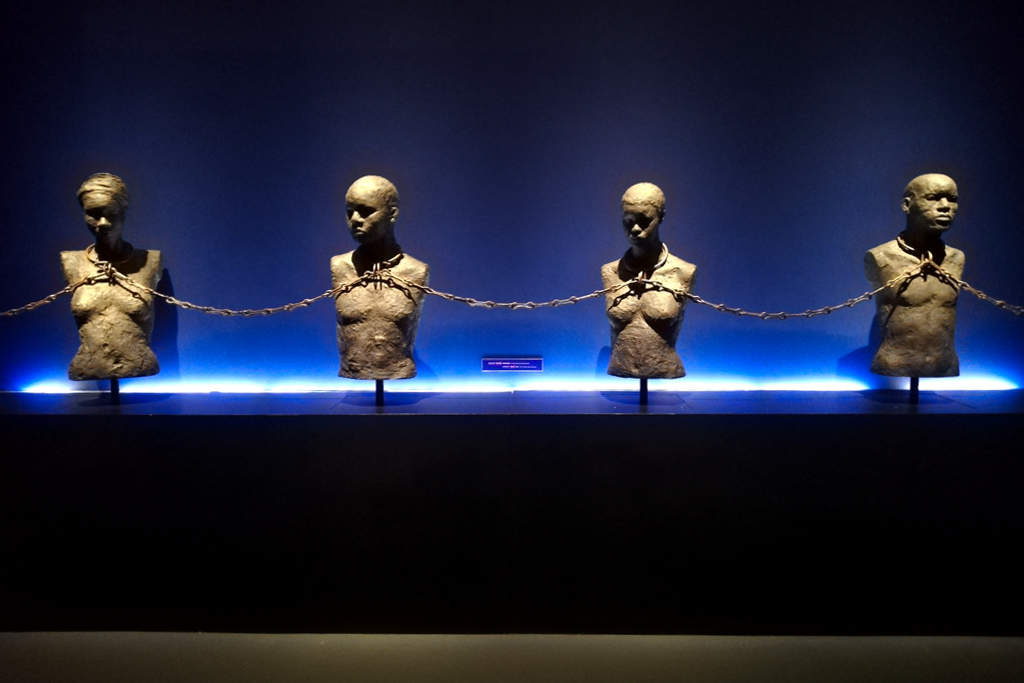
You’ll find a summary of how Guadeloupe was created and how it became what it is today, including its somewhat absurd status as one of France’s 101 departments, in my post Grand GUADELOUPE: Complete Guide And Perfect Itineraries (also for travels by public bus). There, I also put together all the information and personal tips from my recent trip to the archipelago. This way, you can find all the details you need for your own travel in one place. They will make planning your trip easier and therefore much more fun.
But now off to our tour of Grand Terre.
Grande-Terre – the Large Land
Despite its name which translates to Large Land, Grande Terre is actually smaller than Basse Terre, however, it is slightly more populated by five percent.
Instead of Basse Terre’s high densely overgrown mountains and dramatic gorges, rolling hills, picturesque cliffs, and most importantly, dreamy white sand beaches define the appearance of Grand Terre. In fact, the island is a limestone plateau, surrounded by coral reefs. Also, Grande Terre has a much drier climate than Basse Terre. You’ll immediately notice that the vegetation here is not as dense and also much flatter.
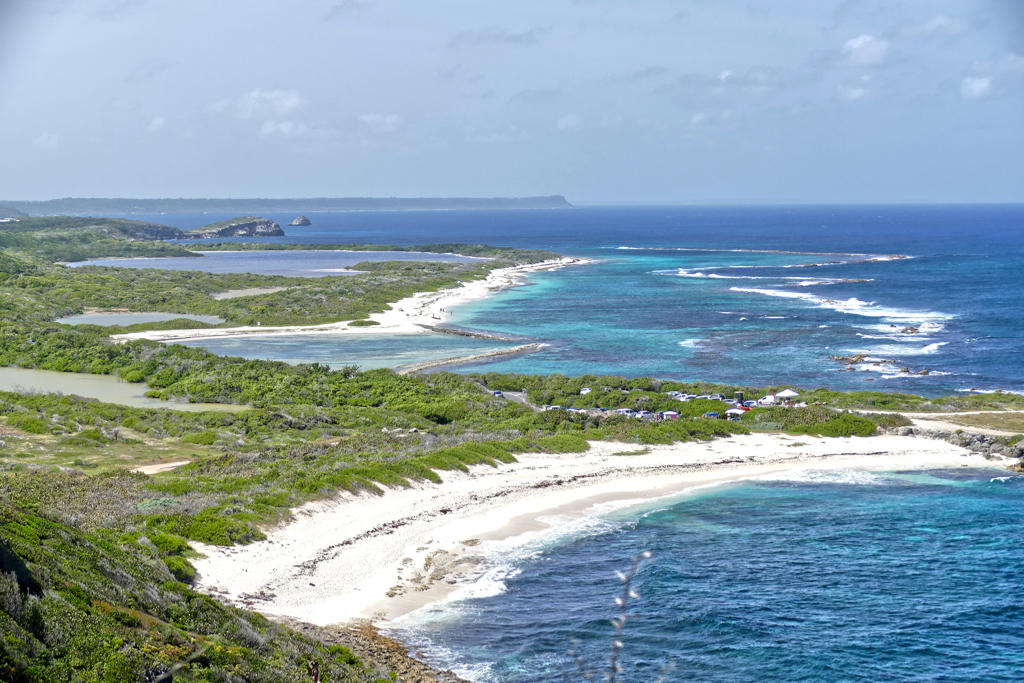
All this is probably the reason for Grand Terre being far more touristy. While many parts of its coast are still dotted with towns and fishing villages, vast areas are gradually being transformed into seaside resorts including big hotel complexes with adjacent golf courses and casinos, mainly around the town of Le Gosier and in the hotel zone between Sainte Anne and Saint François.
Go West
As you know, I’m a self-proclaimed flashpacker and poverty jet setter, hence, don’t look for me in one of those all-inclusive resorts! Consequently, I’m not covering them in this guide to Grand Terre. Also, you certainly don’t need any guidance to stay at a resort that is basically a kiddy club for grown-ups.
I rented a self-catered apartment in the center of Sainte Anne and took it from there. This means that apart from lazing on the amazing beaches that were located within walking distance, I explored the island, and I did it exclusively by public bus.
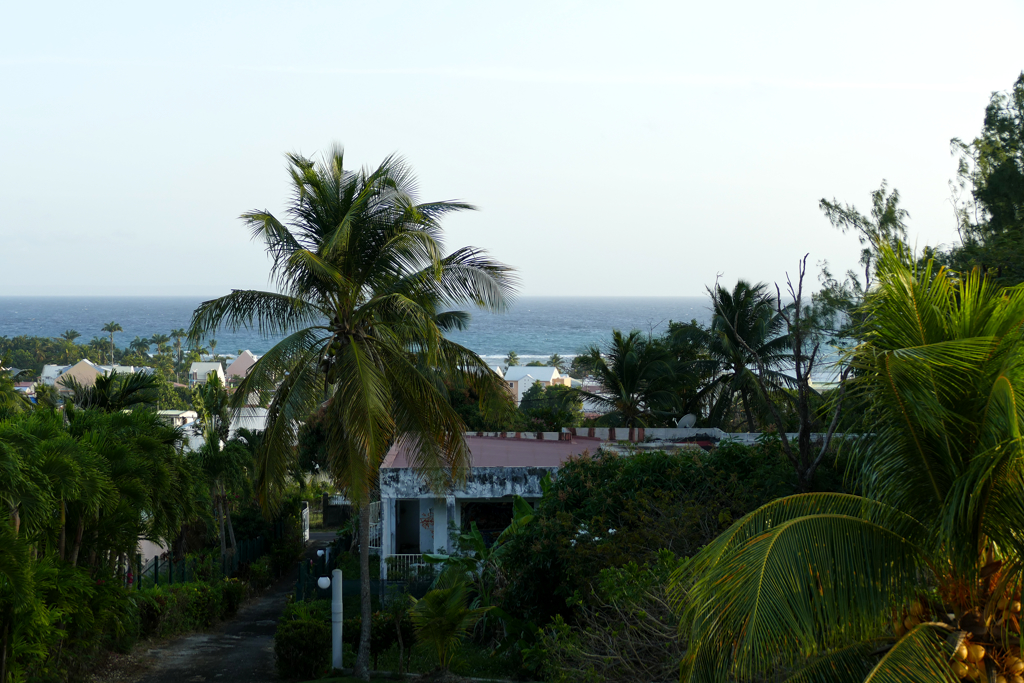
Rumour has it that public transport in Guadeloupe is neither comprehensive nor reliable. Some claim it’s impossible to visit the island without having your own vehicle. People believe that, and then they are stuck in endless traffic jams. Or they are desperately searching for a parking spot around the city of Sainte Anne.
I’d argue that driving your own vehicle is not easier than taking the bus.
It’s just a different kind of hassle.
Pointe-à-Pitre
Although Columbus discovered Guadeloupe in 1493, the city of Pointe-à-Pitre was founded only in 1763 under the name Morne Renfermé. A major fire devastated the place in 1780. After its reconstruction, the municipality grew to around 20,000 inhabitants in only sixty years. At this point, the sugar industry was the town’s main source of income. Sugar was processed in over fifty factories that existed in and around Pointe-à-Pitre. It was then exported primarily to France.
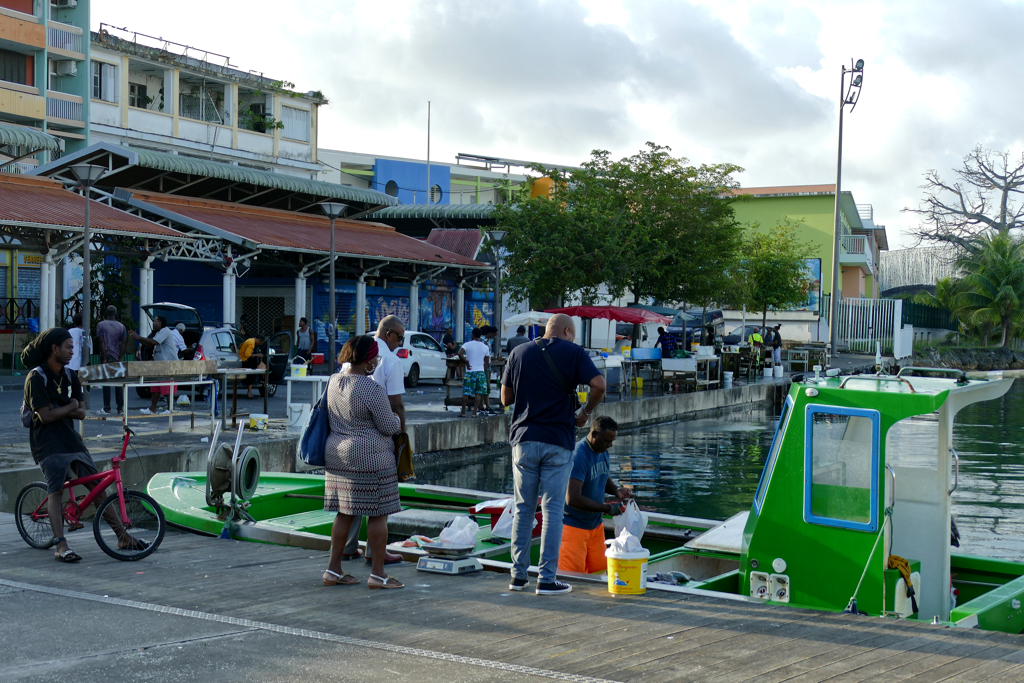
Especially if you are exploring Guadeloupe by public transport, you won’t avoid regular pit stops at Pointe-à-Pitre. It is the island’s largest city and is located in the west of Grande Terre on the border to Basse Terre. Coming from the east, you’ll most likely arrive at the Gare Routière de Darboussier. This is the station for coaches of the bus company Karu’lis which also caters to the district of Pointe-à-Pitre. Coming to the city from the northern part of Grand Terre respectively Basse Terre, a different bus company will take you to the Gare Routière Bergevin stop. I’m explaining all this in detail below in the How to Get Around Section.
Place de la Victoire
However, for being the largest city that accommodates more than a quarter of the island’s population in its urban area, landmark-wise, Pointe-à-Pitre has surprisingly little to offer to visitors. Therefore, a half-day visit should be enough unless you have special interests.
Let’s start at the centrally located Place de la Victoire. I have rarely seen a less inspiring square. And I’m not the only one who finds this place incredibly boring and almost depressing. Read the reviews on Tripadvisor and you’ll see that in comparison, my description is still rather euphoric. Nevertheless, the square is historically important and was the social center of the city even not that long ago. As a matter of fact, it was named Place de la Victoire in 1794 to celebrate the triumph of the working class over the aristocrats and, most importantly, the abolition of slavery.
Tables Turn
In 1789, the so-called sans-culottes in Paris rose against the monarchy in the famous French Revolution. Eventually, the oppressed people in the French colonies should also benefit from the liberation movement. Hence, in June of 1794, nine ships carried more than 1,000 revolutionaries from France to Guadeloupe. One of them was the former merchant Victor Hugues. In his luggage was an unusual item that would never be allowed in your carry-on: Hugues brought a mobile guillotine to the island! It was set up on the Place de la Victoire where then, the colonial plantation owners and slave masters were beheaded.
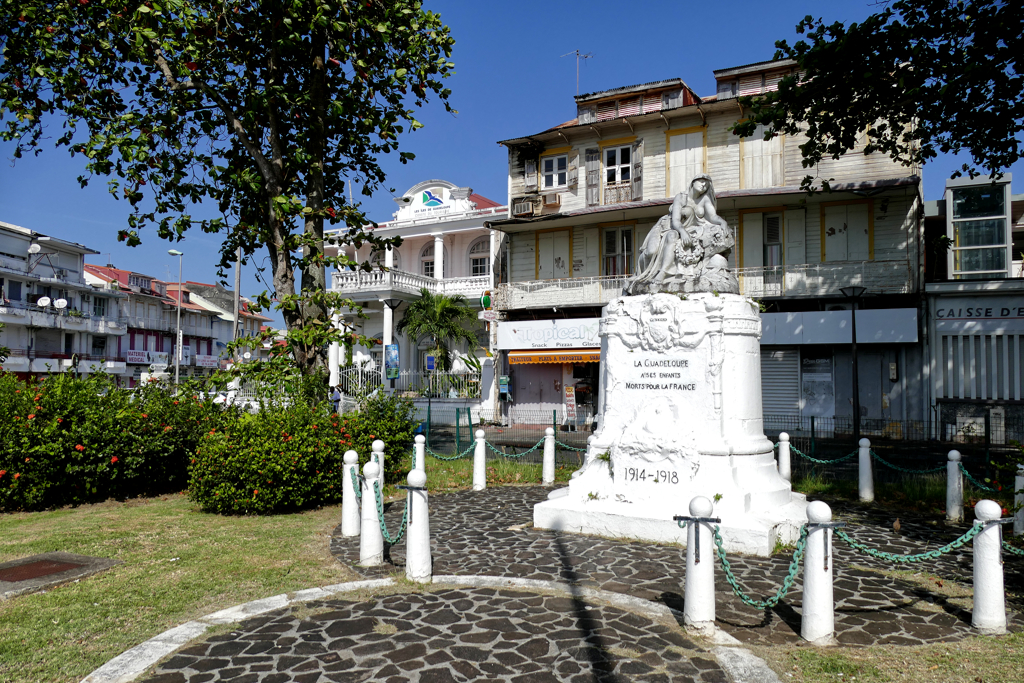
There are still some very beautiful historical buildings around the square. Sadly, they are all in a state of decay. For example, the old presbytery of Saint-Pierre-et-Saint-Paul from 1845 on the northwestern corner of the square. It is now called Pavillon de la Ville and makes up for its pitiful appearance by housing inspiring art exhibitions.
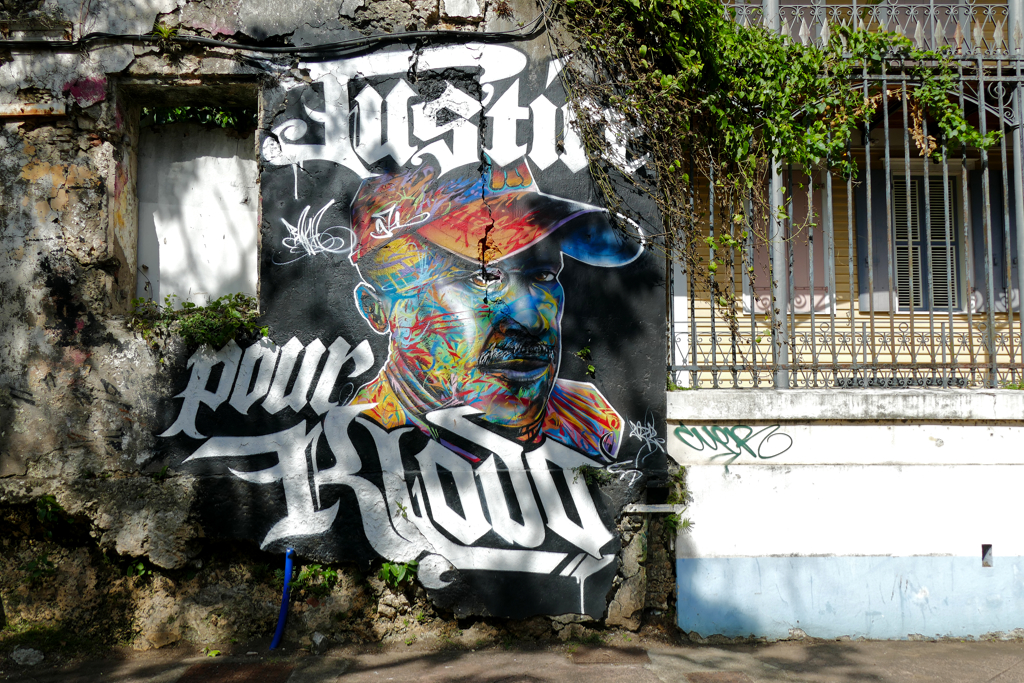
A villa built in 1927 in a neoclassical colonial style now houses the tourist office at the southwestern corner. However, according to my experience, Guadeloupe’s tourist board is not particularly efficient. Hence, the office was always closed whenever I walked past.
To cut a long story short, the Place de la Victoire will remain a square that you cross quickly.
Icons from Iron
Yet, west of the square is one of the city’s few real landmarks, namely the Catholic Saint Pierre et Saint Paul church. After Victor Hugues had destroyed the former church in 1794, a new house of worship was completed in 1817. However, in 1843, it was heavily damaged by an earthquake. To solve some static problems, architect Charles Trouillé suggested creating a metal frame structure.
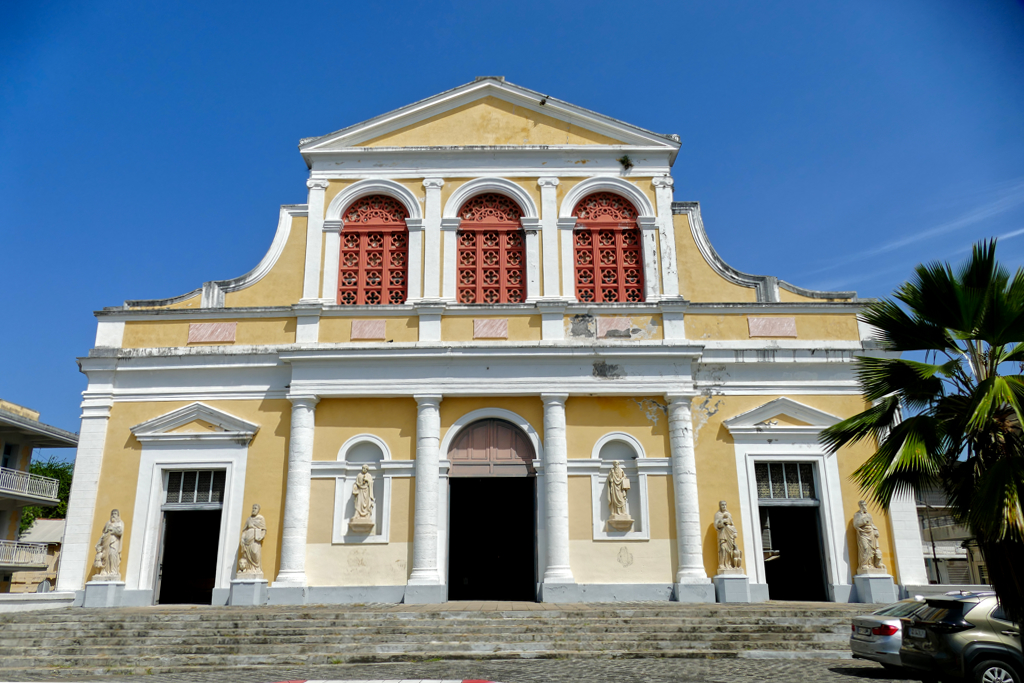
As a matter of fact, the church building was not Trouillé’s only iron creation in Pointe-à-Pitre. In 1871, a fire destroyed the city’s market building in what’s now Place de la Liberté. Charles Trouillé designed a new covered market which was inaugurated in 1874. This makes it one of the oldest markets in the city.
Don’t get fooled by the fact that at this market, some of the merchants are traditionally dressed and wear elaborate headdresses. As you ask them for permission to take a photo without having bought anything, you will get a rather harsh and unfriendly answer. But that’s not all: Even when I took photos of the market as a whole, I was yelled at.
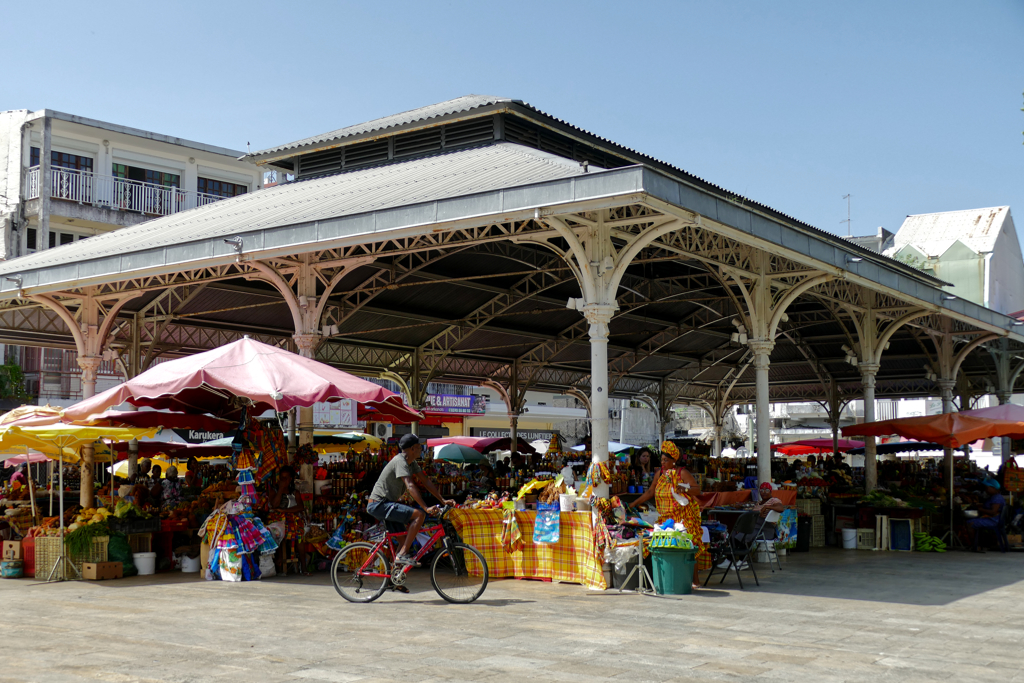
And that wasn’t the only time, by the way. People shouted and cursed me when I simply took photos of streets’n’squares, which I found completely exaggerated. I can very well understand why people don’t want to be photographed in close-up as a local attraction, especially without being even asked. But if I want to take a picture of a public square, the passers-by are – also legally – so-called accessories. With all due respect, I repeatedly found the aggressive reactions to me taking pictures of public spaces completely exaggerated and borderline incoherent.
ACTe Memorial
A landmark that every sightseer should visit is the museum of the history of slavery ACTe. The European Union, the Guadeloupe Cultural Senate, and the city of Pointe-à-Pitre financed the complex as part of the UNESCO Slave Route project. On May 10, 2015, which is the international day of remembrance of the victims of slavery, the then French President François Hollande inaugurated the museum.
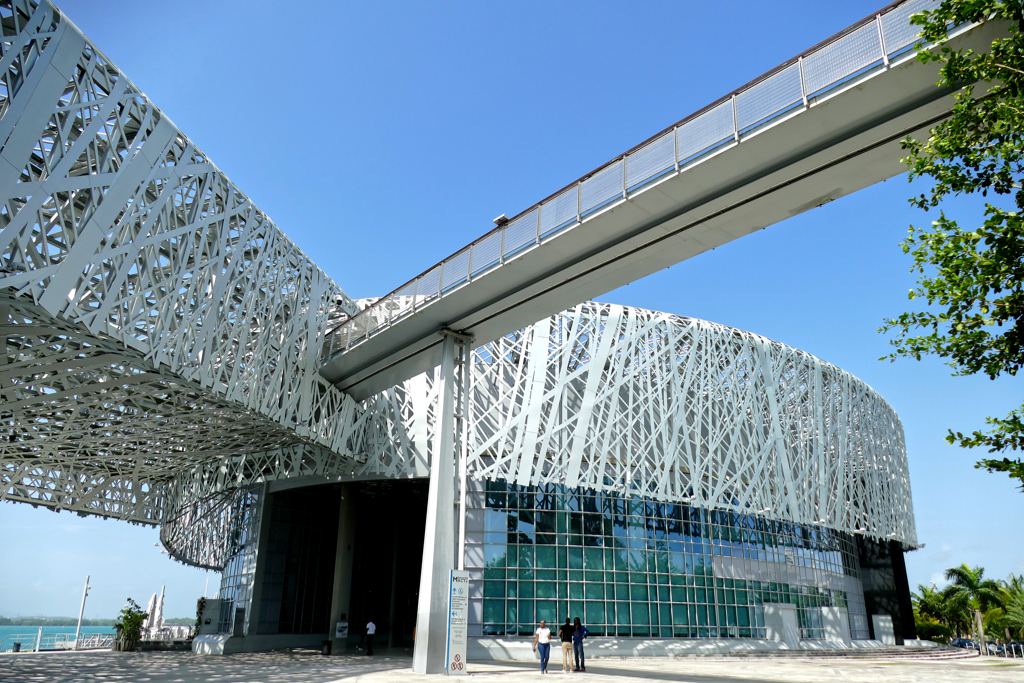
Guadeloupean architects Jean-Michel Mocka-Célestine, Pascal Berthelot, Mikaël Marton, and Fabien Doré designed the facade as a mesh of silver steel, covering black granite and studded with quartz fragments, very similar to the iconic MuCEM in Marseille.
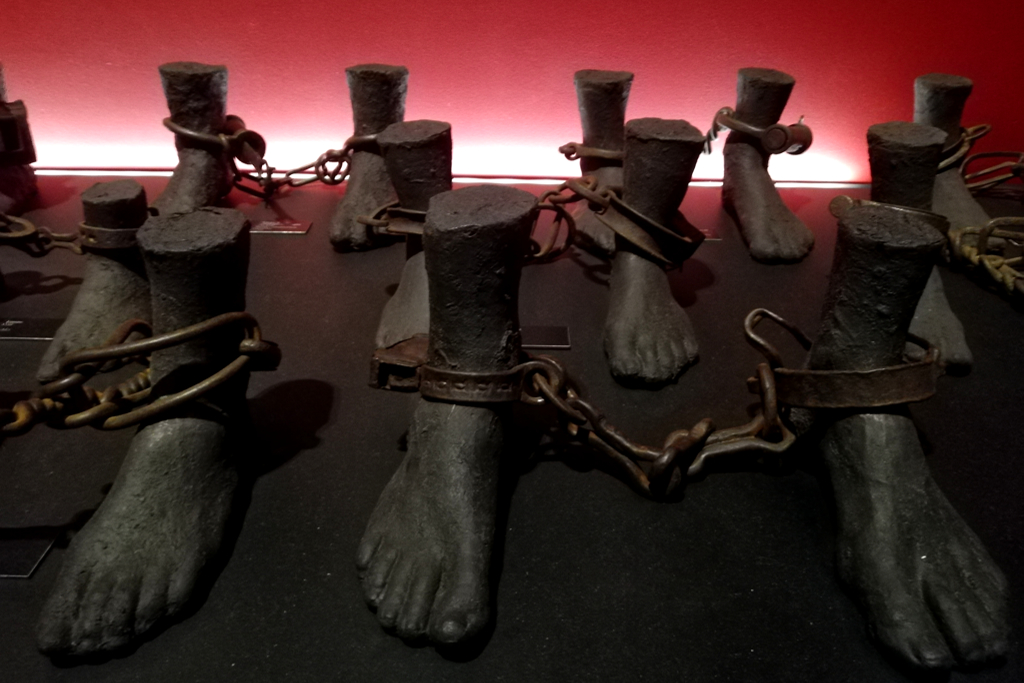
The main building houses an extensive exhibition on slavery from Antiquity to the present day with a focus on the infamous triangular trade and its consequences. None less than Jesse Jackson who visited the venue in 2015 confirmed it to be the most complete museum dedicated to the atrocious history of slavery.
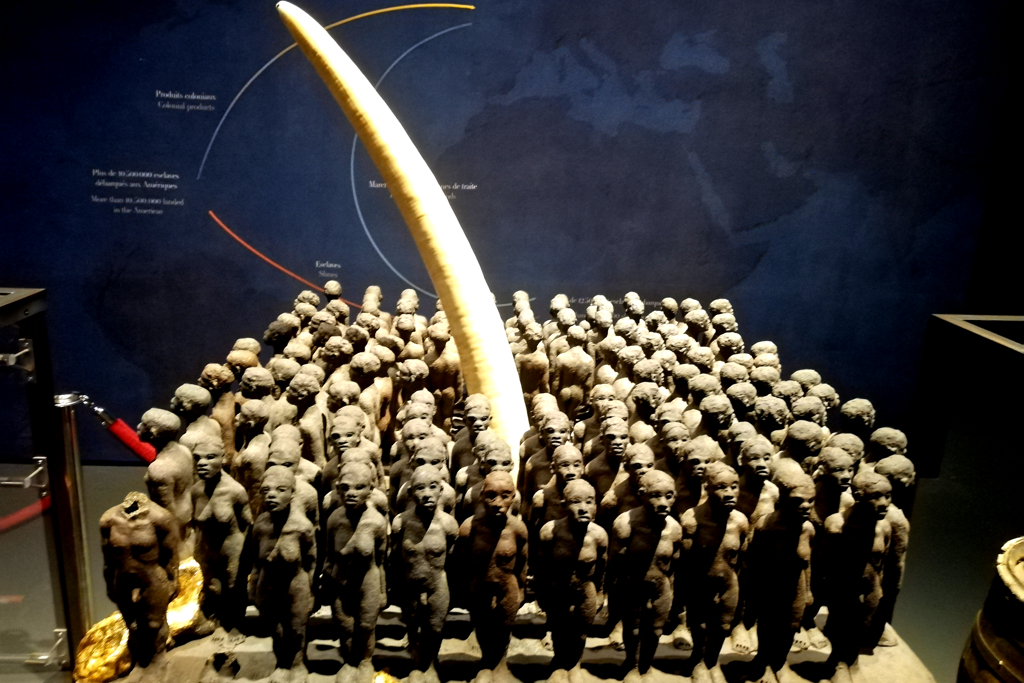
The museum is open from Tuesday to Sunday between 9 a.m. and 6 p.m. and the general entrance fee is 15 €uros.
Historic Grounds
Very fittingly, the ACTe Memorial was erected on the site of the former Darboussier grounds on the eastern border of the harbor basin.
Jean-François Cail and Ernest Souques founded their sugar factory in the late 1860s. They named it after the location, hence, the plantation of a French colonialist Jean Darboussier.
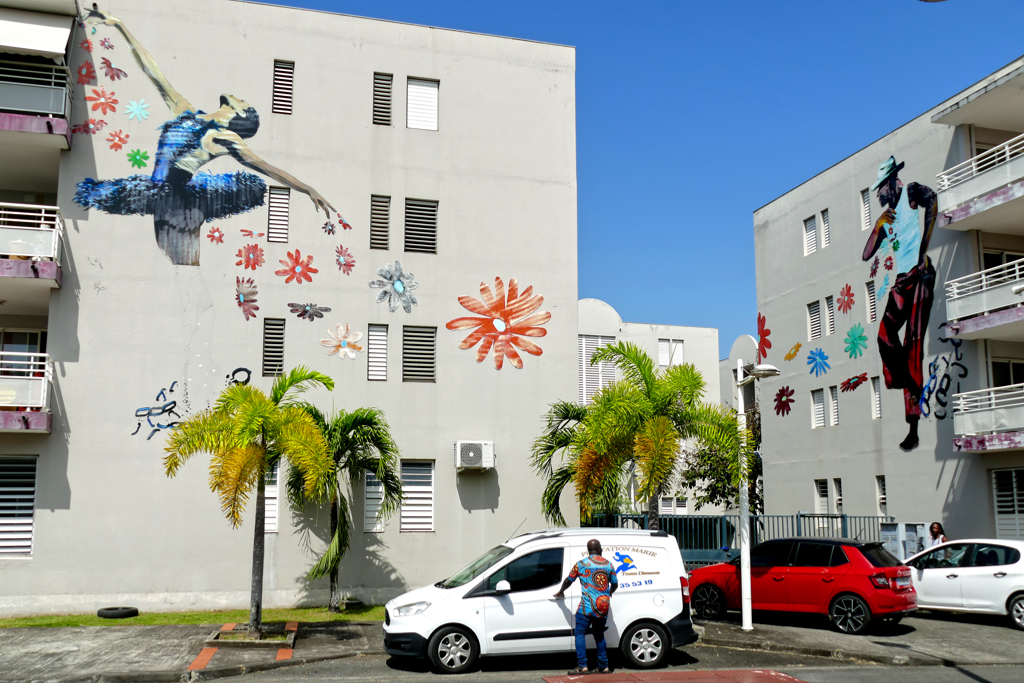
The owners perfidiously organized the employment into a closed circle that essentially forced the workers into serfdom. Vast grounds surrounded the factory where workers and their families were provided with housing and even small lots to farm. Also, they basically had to shop in the factory’s own marts. Hence, the workers didn’t spend any of their wages outside the factory premises. This way, workers often became so deeply indebted to their employers that they were basically serfs.
However, this was not a distinctive stroke of genius by Cail and Souques. Shockingly, it was a common practice, particularly on the plantations in South America.
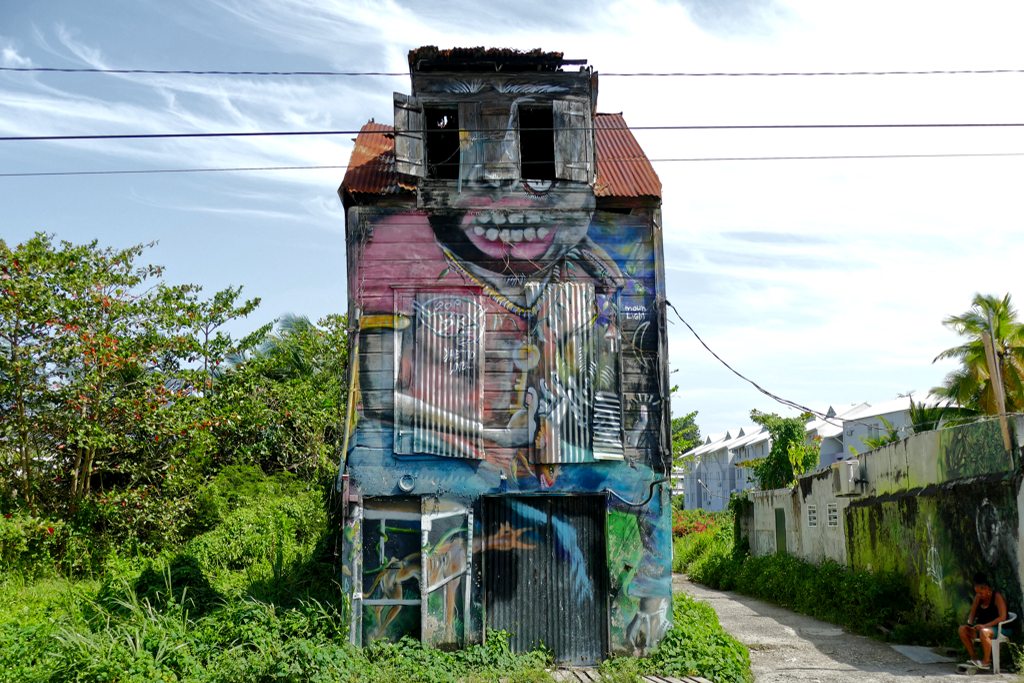
The global sugar crisis at the turn of the 19th century forced the owners to cede the factory to creditors in continental France. After production ceased, the site remained a wasteland until the 2000s. Several projects were planned to build housing and shops in this area which is severely affected by unemployment and poverty.
More Memorial Sites
Just around the corner from the spice market in the historic district of Pointe-à-Pitre is the Musée Saint John Perse. This building from 1880 has a metal and brick structure which was probably designed in the workshop of Gustave Eiffel. Yes, the one with the tower.
Between Saint François and Le Moule is the Habitation Zévallos, the mansion’s sister building.
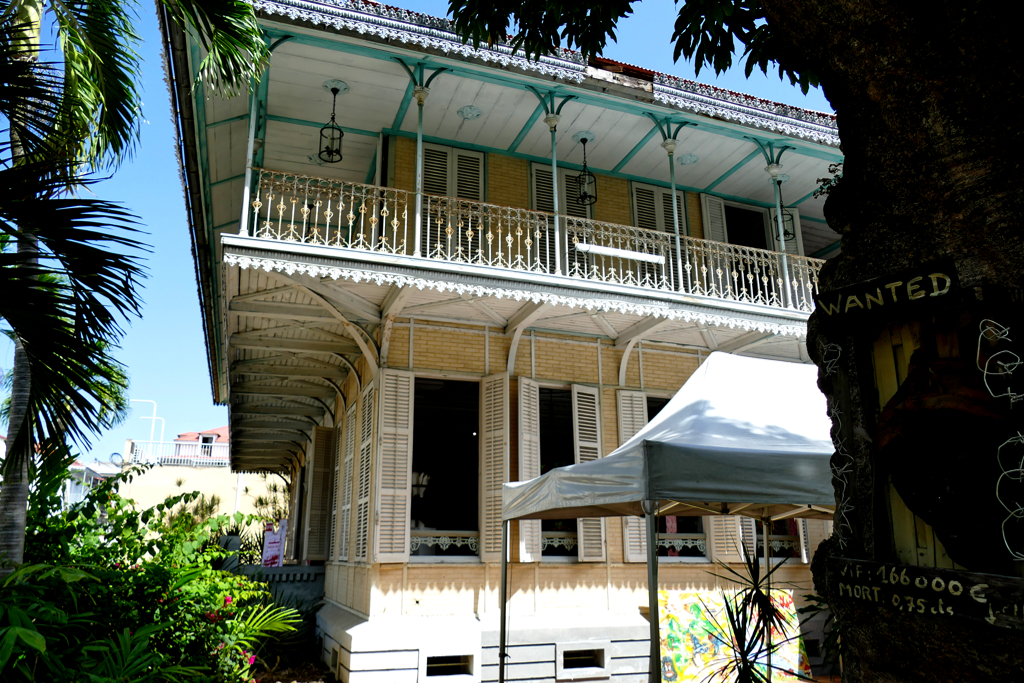
Initially, it was the residence of Ernest Souques, the owner of the Darboussier sugar factory. After it had been empty for many years, the city of the Pointe-à-Pitre purchased it in the 1970s to transform it into the Saint John Perse Museum.
Today, it houses permanent exhibitions on the poet and diplomat Alexis Léger aka Saint John Perse. He was awarded the Nobel Prize for literature in 1960.
Also, there is a fun exhibition of Creole attires.
The museum should be open Monday to Friday from 7:30 a.m. to 4:30 p.m. and from 8 a.m. until noon on Saturdays. The admission is free.
Fun Fact
The building parts were manufactured at the Eiffel workshop in France to be exported to Louisiana. But the ship carrying the pieces was wrecked off the coast of Guadeloupe. The recovered elements were therefore sold at auction on the island.
Obviously, there is also a museum celebrating the über-present Victor Schœlcher. The building on Rue Peynier was constructed in 1883. It houses a collection consisting mainly of objects and trinkets which belonged to the journalist and the French politician Victor Schœlcher. The museum was inaugurated in 1886, hence, during Schœlcher’s lifetime. After his death in 1893, objects linked to slavery and the slave trade were added.
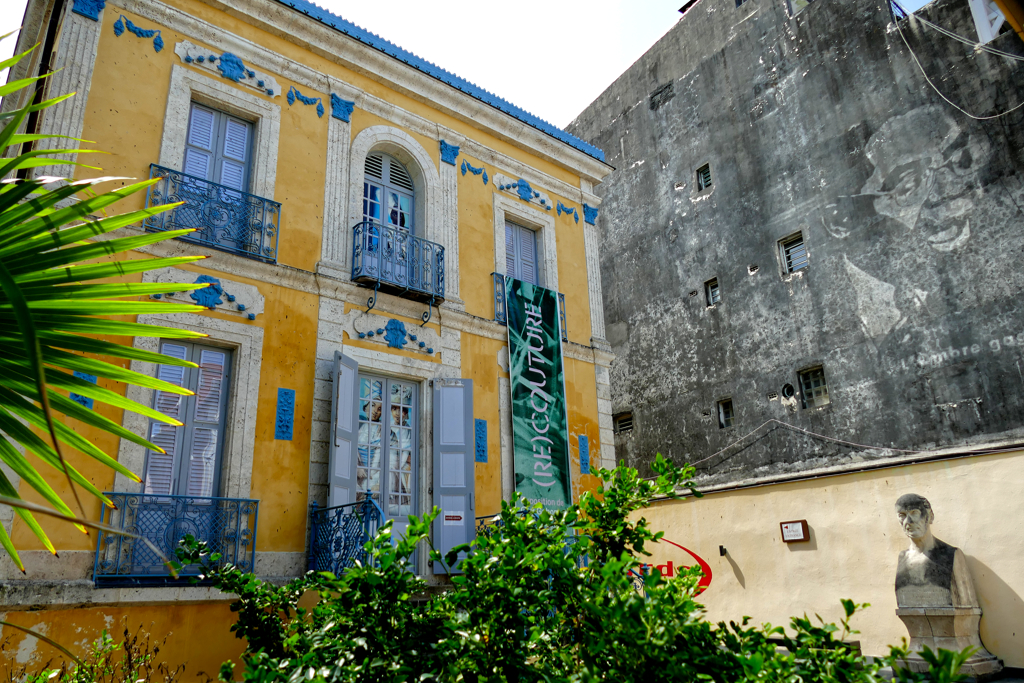
The Musée Victor Schœlcher can be visited on weekdays from 9 a.m. to 5 p.m. free of charge.
Hidden Gems
“Hey”, I hear someone calling as I pull out my cell phone and try to find the number six on Pointe-à-Pitre’s Quai Foulon.
“Hey”, I’m turning around. “Are you here for the tour?” Yes, I am. So I put my phone away and follow the young man up the street to a huge garage where there is a row of oversized tuctucs. Two middle-aged couples are already waiting next to one of the vehicles. Loïck, that’s the name of the young man who chased me down, gets behind the wheel.
And then the adventure begins: He will show us some of the lesser-known parts of Pointe-à-Pitre. Places tourists usually don’t venture to.
We just have turned two corners as we have to get out because we arrive at the so-called Green Hostel*.
In the former townhouse of a rich rum magnate, ambitious folks opened the island’s first youth hostel. But that’s not all: It is actually an accommodation committed to environmental friendliness as well as the arts. They want to promote holistic and respectful tourism.
We climb up the narrow steps of a shabby staircase to a beautiful roof terrace. While Loïck devotedly explains the history and concept of this special accommodation, we are allowed to look around and even take a quick peek into an unrented room. Hmm, if I didn’t want to live close to the beach in Sainte Anne, one of the private rooms with an en-suite bathroom would be a valid alternative. Let’s see, I’ll keep the Green Hostel* in mind for my next visit to Guadeloupe.
Recycle’N’Restore
Now we move on to the Pointe-à-Pitre Sign next to the harbor basin. Between the now closed Marché de la Darse and the chic Yacht Club restaurant, local artist Jean-Luc Dejean has created impressive sculptures out of recycled metal parts’n’pieces. At this moment, I don’t know yet that I will see several of his amazing pieces at the Kreol West Indies gallery on my day trip to the Pointe des Chateaux.
After a couple of souvenir shots, we are off to the other side of the harbor basin where Loïck explains to us what the mural Mé 67 is all about.
May 1967
Guadeloupean artist Philippe Laurent created the mural as a tribute to the victims of riots that took place in Guadeloupe in May 1967.
“Say Bonjour to the negro!”, ordered Vladimir Snarsky, the owner of a large shoe store in the town of Basse Terre as he released his German shepherd to chase away an old and disabled shoemaker who set up his little stall in front of his store. This act of racist cruelty was the final drop and an ignition spark to a series of protests and strikes across the island in 1967.
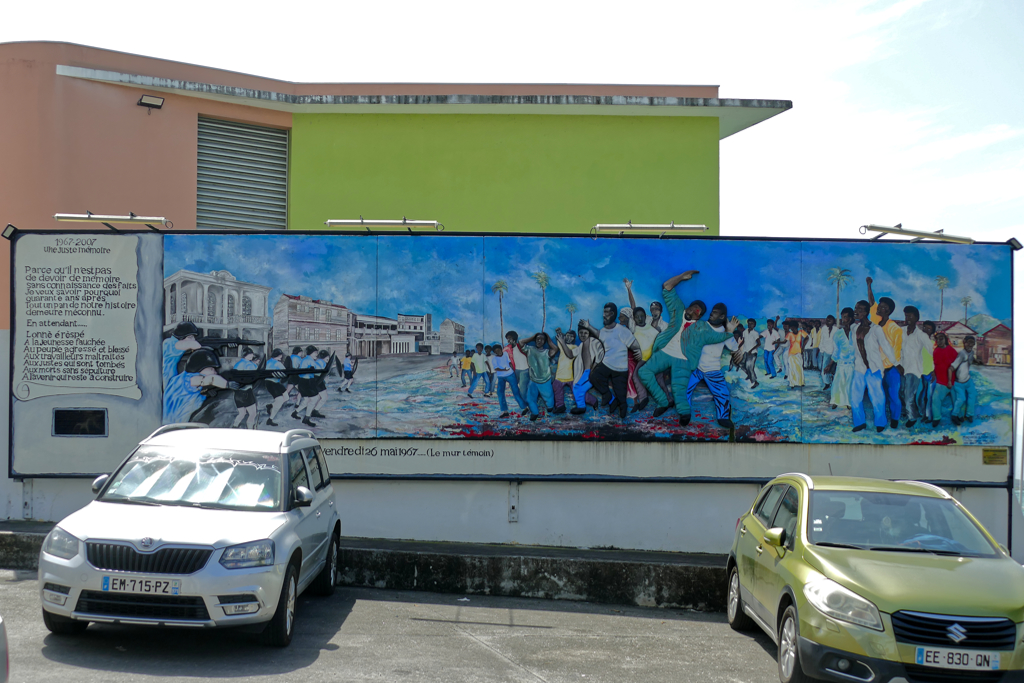
When later negotiations between unions and employer representatives failed, riots began. While demonstrators flung conch shells, stones, and glass bottles, the armed gendarmes threw gas grenades and fired on the protesters. Today, historians can only assume that there were up to 200 deaths as the archives don’t exist anymore.
Yes, the tour is highly interesting, yet not always just fun.
A Different Kind of Gallery
We cross the city center to explore an amazing initiative, the Centre des Arts et de la Culture.
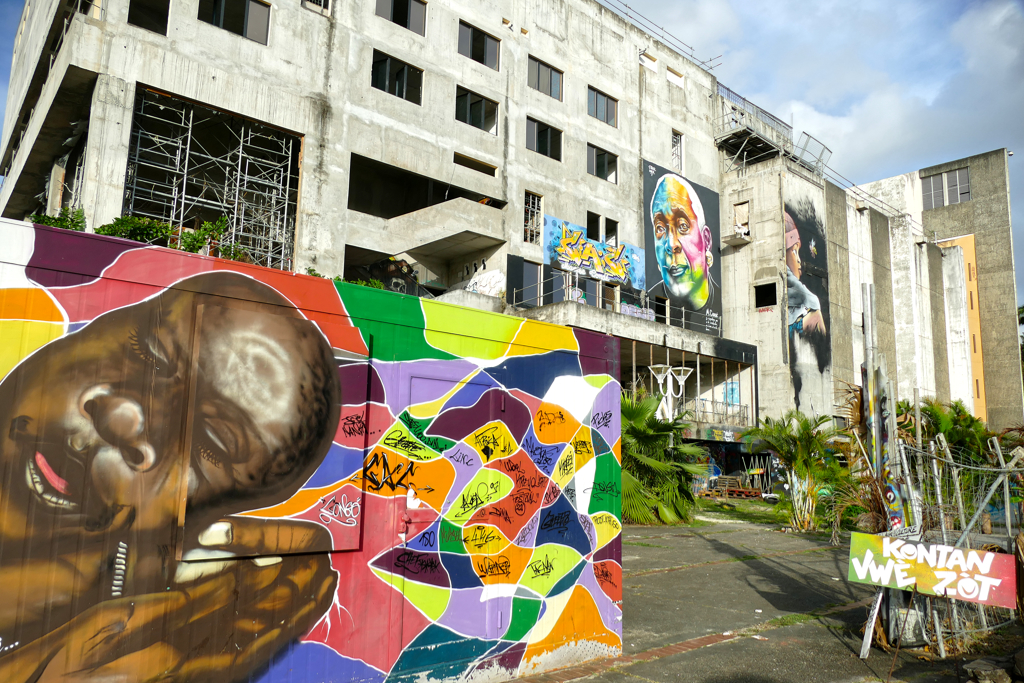
At first glance, it looks a bit like a stronghold and I certainly wouldn’t have dared to go in by myself. Yet, this place is definitely worth exploring.
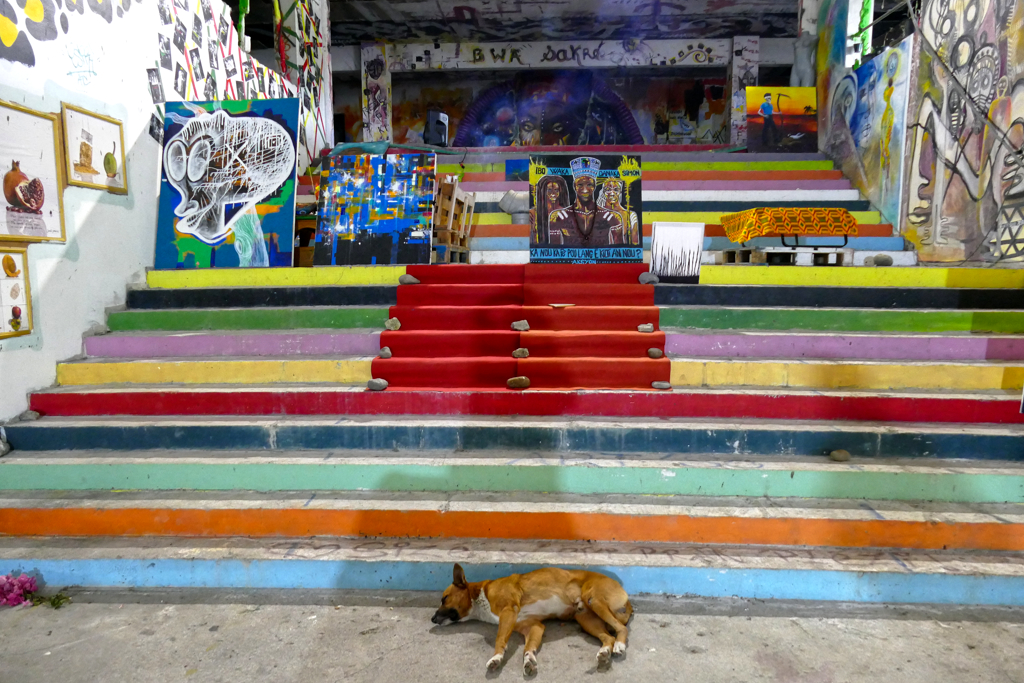
As a matter of fact, the art and culture center was opened way back in 1978. For the longest time, it was a popular venue promoting Guadeloupean and international artists.
But as things go, it supposedly has been under renovation for many years. In fact for so many years, that some artists grew tired of waiting. Therefore, in 2021, the Kolèktif Awtis Rézistans, hence, the artist collective in resistance, occupied the building in a non-violent coup.
This collective consists of around a hundred artists such as painters, sculptors, musicians, actors, and poets. While they are understandably frustrated by the authorities’ oblivion and neglect of the arts, they still make the best of this state of insecurity.
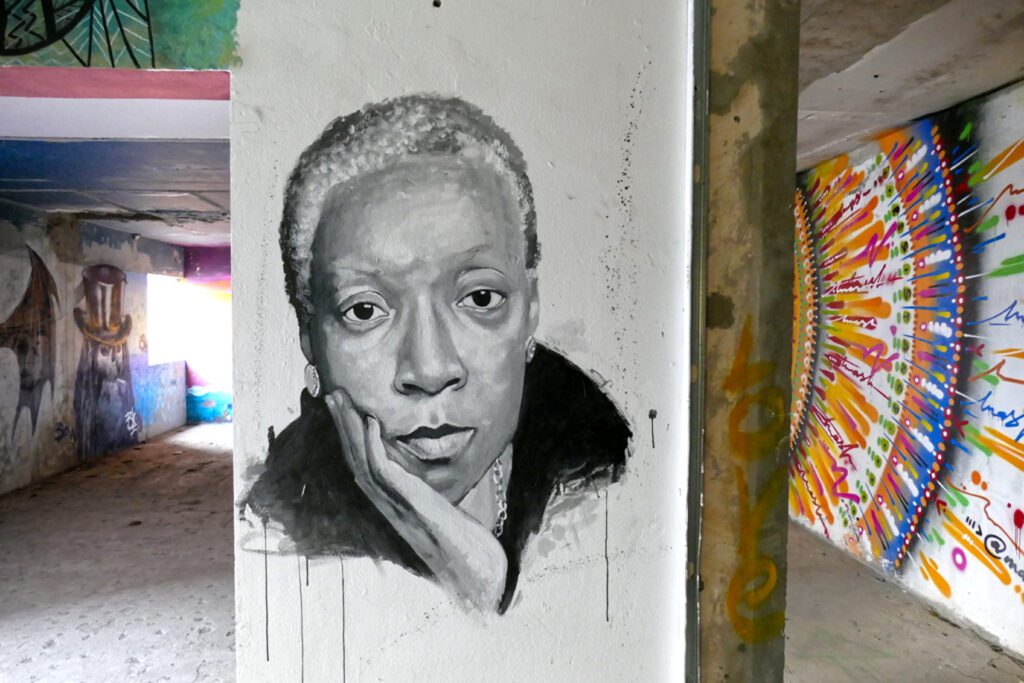
The most striking part of the center is of course the colorful and expressive murals that are painted both on the outside wall and in the interior rooms. You guys know how passionate I am about street art, hence, a guided visit to the center was the indisputable highlight of our tour.
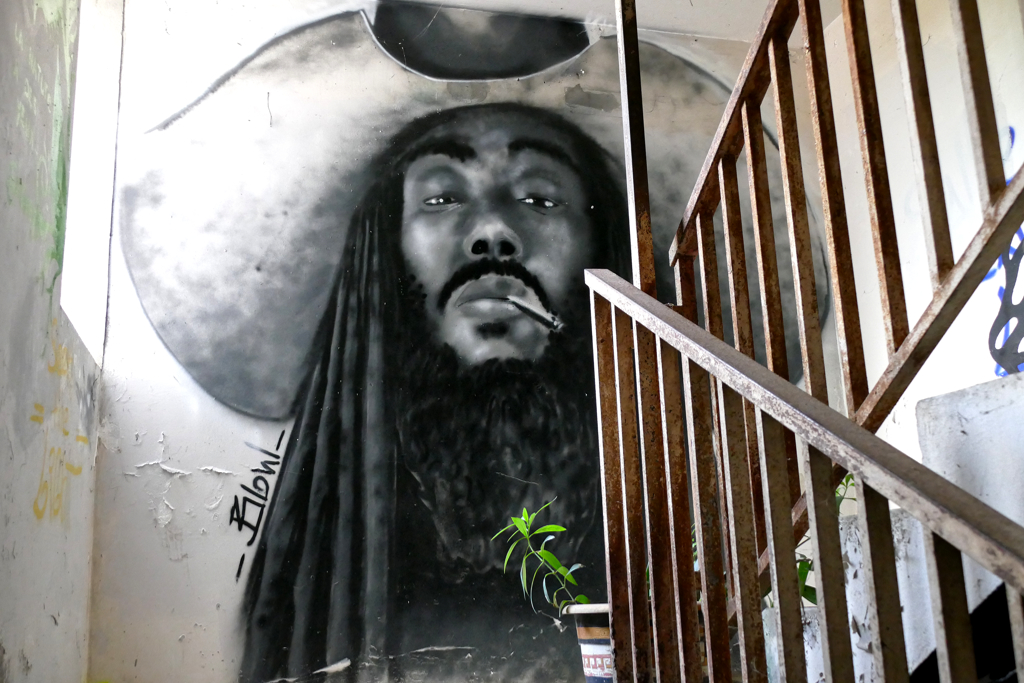
Nevertheless, introducing all the great works is beyond the scope of this post. Therefore, I will introduce the most outstanding pieces and go into detail about their creators in my post The Best Street Art in Guadeloupe.
Join the Fun!
For me, this was the final stop of the tour since I had to do some quick grocery shopping before catching the bus back to Sainte Anne. It was such an informative and fun afternoon, I could have listened to Loïck for hours!
Obviously, you can visit all those sites by yourself. Yet, it’s far more informative and enjoyable to go on tour with a knowledgeable and passionate guide like Loïck. You can book different vehicles and tours at a reasonable price on the website of the company Pousse Pousse – Ti Balad Peyi**.
Le Gosier
I had already been in Guadeloupe for about a week when I finally visited Le Gosier. And I have to say, I had a bit of a culture shock. I don’t want to pretend that I lived authentically on a mountain in the hinterland with bats and iguanas in a straw hut. No, I had booked an apartment in one of Guadeloupe’s most touristy towns.
Nevertheless, tourism in Le Gosier was different. On my way from the bus stop next to the freeway to the beach, I passed countless larger hotels and tourist facilities. There were several big supermarkets. Also, there were McDonald’s and Kentucky Fried Chicken.
Hence, one could euphemistically call Le Gosier developed.
Personally, I call it developed to the point of conformity and boredom.
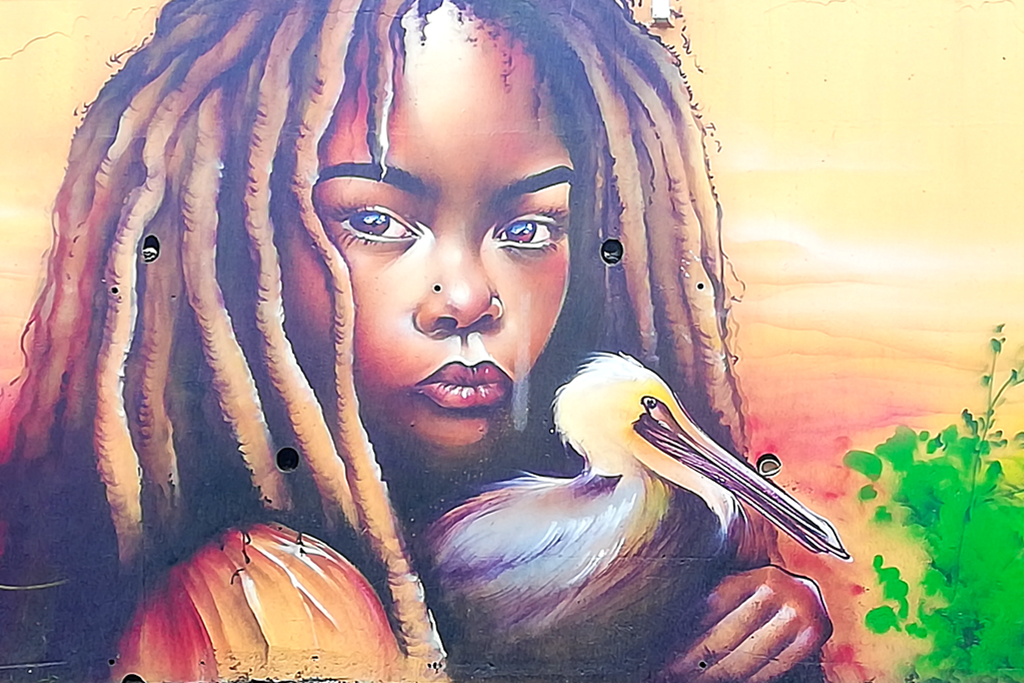
It’s simply not very Caribbean, it could as easily be on a Mediterranean island or anywhere else in the world where tourists come primarily to soak up the sun and have it easy and comfortable.
It is for those whose main interest is relaxation rather than exploration and experience.
Come to think of it, I actually do relax through exploration and experience.
But everyone is different and those who want an uncomplicated and comfortable holiday in the French Antilles will certainly feel at home in Le Gosier.
Guadeloupe’s Most Popular Seaside Resort
Le Gosier is located on the south coast not very far from Pointe-à-Pitre. Tons of public buses pass by or go straight into the town center. After all, it’s the only place in Guadeloupe with a direct connection to the airport by public bus. I guess that tells you a lot. As I said, it’s rather busy than laid-back, so you’ll find many water activities apart from sandy beaches. Also, there is a huge marina, and there are tons of shops, restaurants, bars, and even a casino.
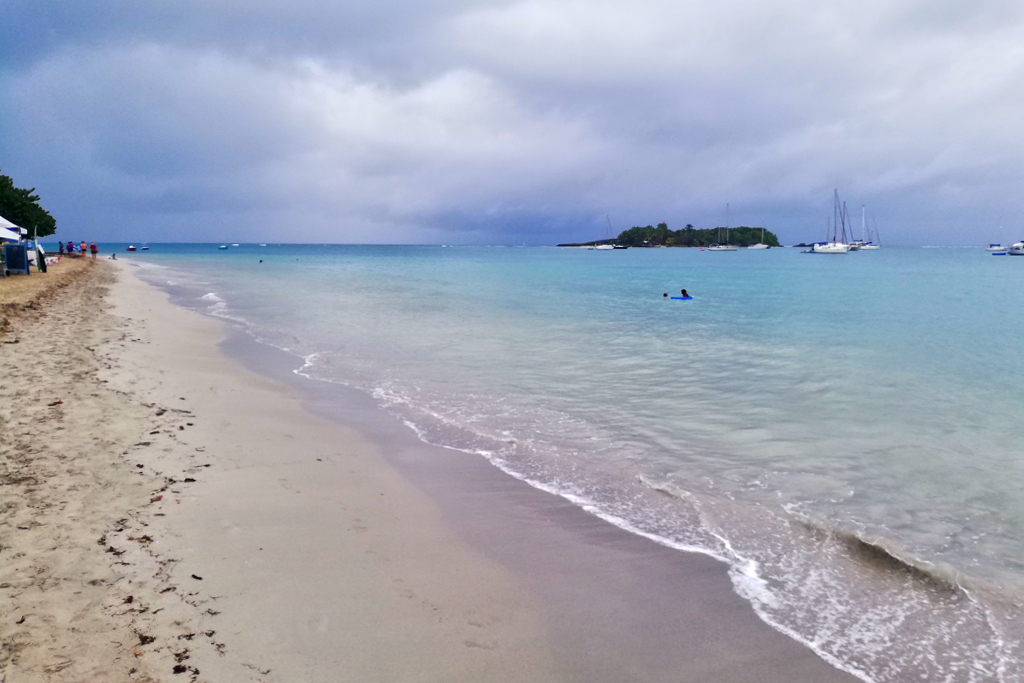
What I liked was the swimming pool created off the beach of Anse Tabarin. For 6 €uros, a shuttle boat takes people from a jetty near the popular Plage de la Datcha to the tiny Îlet du Gosier. However, the sporty folks cross the distance of just one kilometer by swimming.
Sainte-Anne
Maybe this is a good moment to point out an important thing: The colonialists weren’t particularly inventive when it came to naming places. That’s why there are places with the same name in both Martinique and Guadeloupe, and Sainte Anne is one of them. So when you search for something online, always add the island. Otherwise, you may receive information about a place you don’t want to go to.
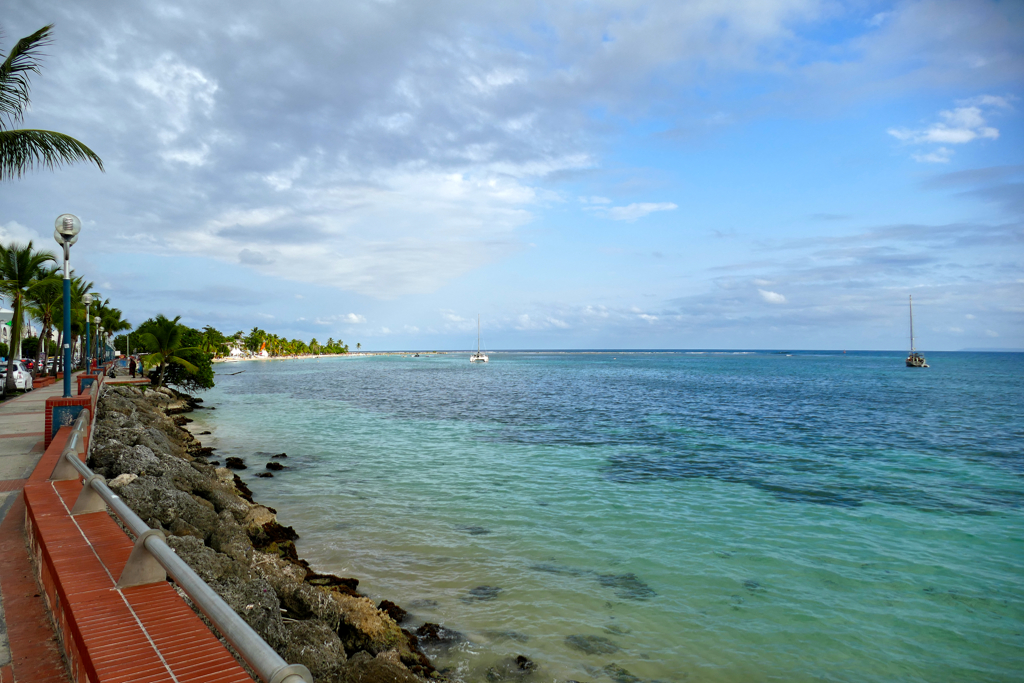
When I was looking for a place to make my base in Guadeloupe, I had two crucial factors in mind: I wanted to be as close as possible to the beach and I needed easy access to public transport. I was very lucky that Chez Janou* had an apartment available. Since they have only four apartments at a reasonable price and are located just a very short walk from the center of town, they tend to be booked out. However, I’m introducing this little gem in the Where to Stay Section below.
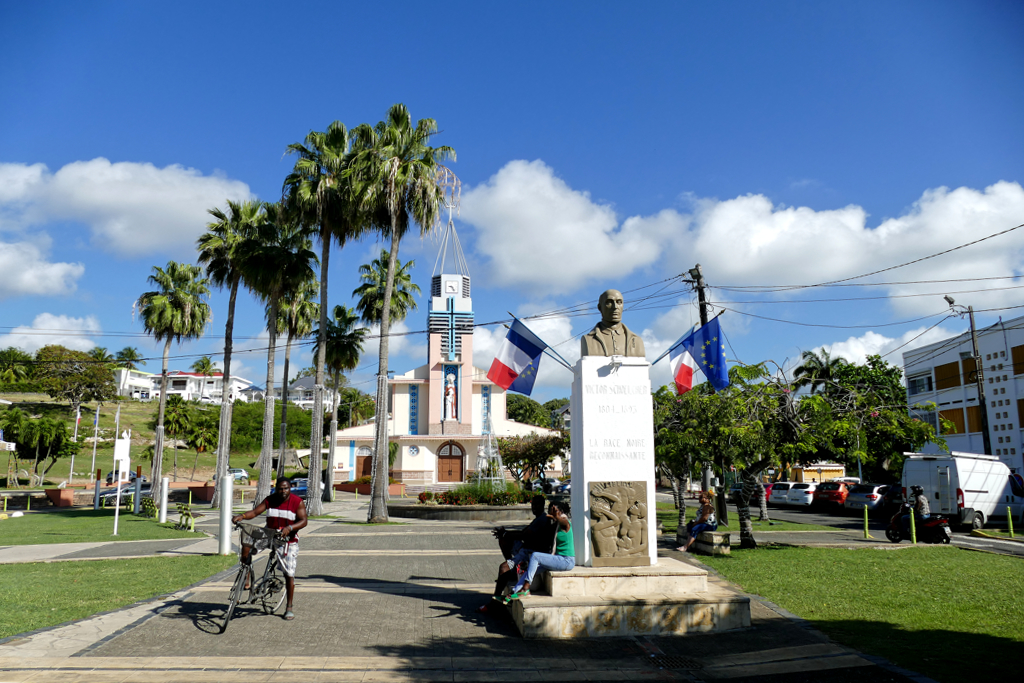
So yes, from Chez Janou*, it took me a five-minute walk downhill to get to the main bus stop in front of Sainte Anne’s Place Schœlcher. It’s the main town square bordered by the most important buildings such as the town hall, a bank, and a post office with an ATM as well as the parish church which is obviously dedicated to Sainte Anne. It looks rather new which it actually is: Ali Tur, a Tunisian-born architect from France built it in 1933. As a matter of fact, between 1929 and 1937, Tur built around a hundred buildings in Guadeloupe after the powerful cyclone Okeechobee caused extensive damage to structures throughout the island in September 1928. Sadly, also over 1,200 victims lost their lives.
Yet Another Schœlcher
As in many towns in the archipelago, a bust of Victor Schœlcher is standing on Sainte Anne’s church square. Yes, of course, there is a bust of Schœlcher. Schœlcher was a French politician and opponent of slavery in the French colonies. Today, streets’n’squares, schools, and even an entire town in Martinique are named after Schœlcher, the white messiah. Honestly, they overdo it a little bit with good old Schœlcher.
There is hardly a square or a park without his statue, no town without a boulevard bearing his name. Enough already, we got it, he was a do-gooder. But now let’s talk about the merits of the black leaders of slave revolts who actually risked their lives in the attempts to free their people. Or about people like Louis Delgrès, the black leader of the resistance to reoccupation and reinstitution of slavery by Napoleonic France, shall we?
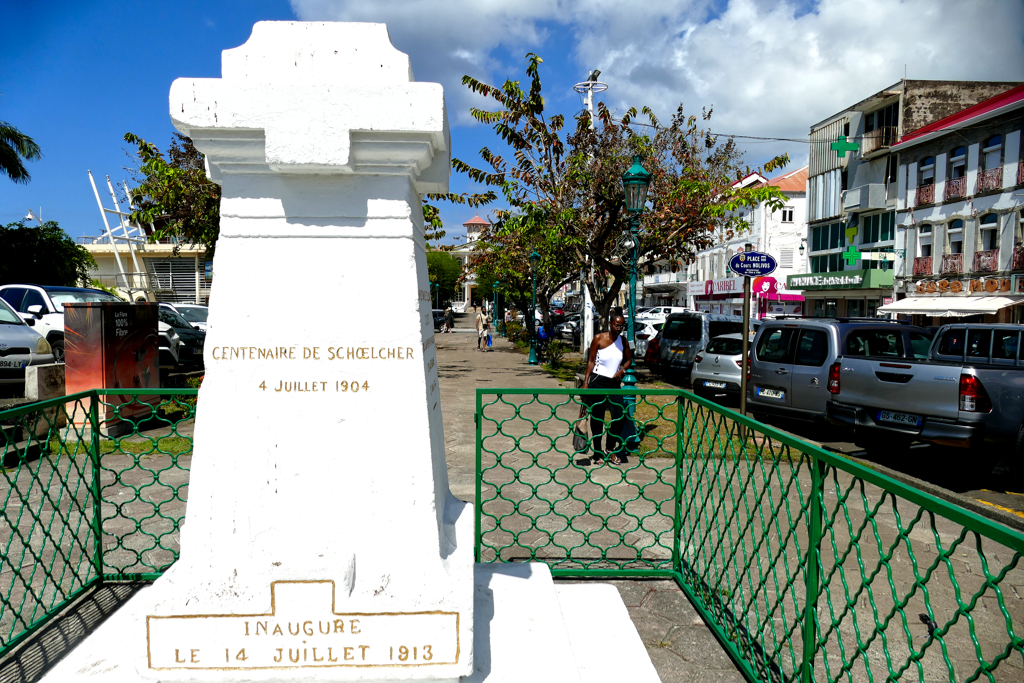
Actually, I do understand why locals see the cultish obsession with Victor Schœlcher with skepticism or even anger. After all, it insinuates that the brave white intellectual had to come to free the thick, obedient Africans from slavery. Also, many locals see Schœlcher as a token and alleged proof that not all white people were greedy racists. Hence, it’s understandable that locals want to knock this alibi off its pedestal. And some actually do it: In recent years, protesters destroyed Schœlcher’s statue in various spots around the island.
Nèg Mawon Memorial
No, locals do not enjoy destroying statues just for fun. They want to send a signal that it is about time to retell the story of the island, colonization, and slavery. Therefore, in practically all town entrances and the middle of many roundabouts, you can now find sculptures that celebrate the abolition of oppression and slavery. In Sainte Anne, it is a memorial that Guadeloupean artist Jocelyn Pezeron created in 2002. Her sculpture Nèg Mawon was inaugurated on the occasion of the bicentenary of the rebellion of 1802. That year, Napoléon Bonaparte reestablished slavery in the French Antilles.
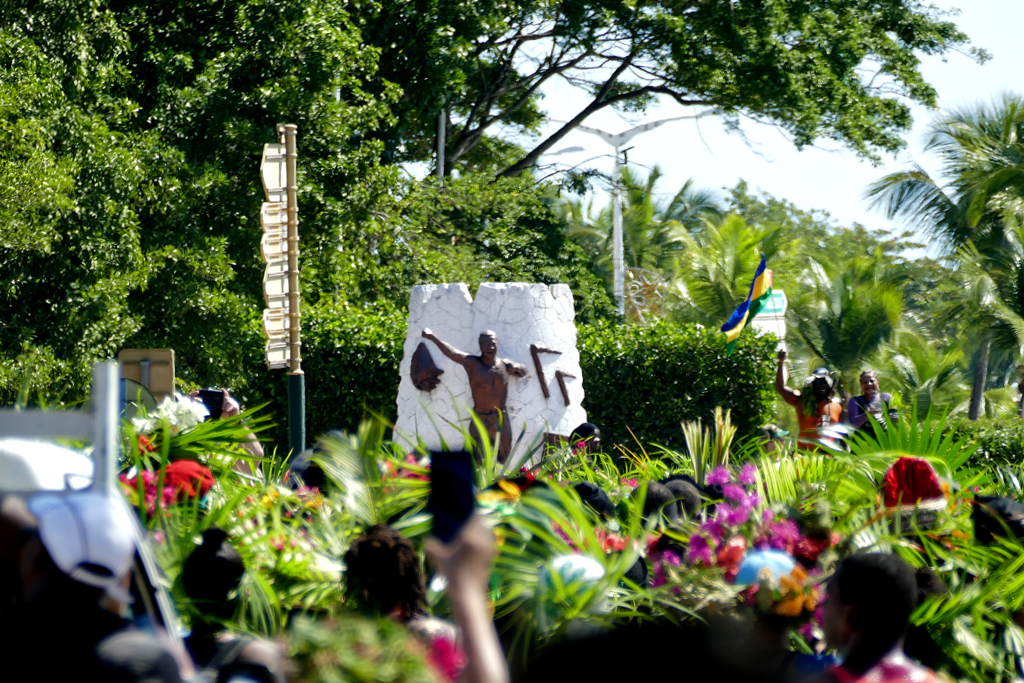
But who were the Nèg Mawon? The term mawon is the Creole version of the word marron and an abbreviation of the Spanish word cimarrón. Initially used for escaped cattle that became wild, from the mid-16th century, this term referred to fugitive slaves.
Obviously, there had always been slaves who achieved escape. Not only did they seek their freedom, but they also founded functioning communities. Furthermore, they attacked settlements and burned plantations to weaken the existing system of injustice.
In the past, sugar cane was cultivated also in the region around Sainte Anne. Due to the impressive economic growth through the export of sugar and rum, the town even became the seat of the admiralty in the 18th century. At the beginning of the 20th century, there were still thirty-four sugar factories. From the 1960s, however, tourism became the main source of income
Today, Sainte Anne is undoubtedly a very touristy place. Every day, cars queue in long lines in search of a parking space near the beach. Nevertheless, Sainte Anne has retained its authenticity. There is an everyday life that tourists can take part in instead of tourist facilities dominating the lives of the locals.
Tourist Attractions
However, there are some tourist attractions like a couple of those much-vaunted markets. There is one on a huge parking lot across from the Carrefour convenience store alongside the main road. Here, tons of stands selling all kinds of souvenirs but also tropical fruit at the entrance to the town beach. As if that’s not enough, there is an entire Village Artisanal, an arts and crafts center about a kilometer west of the town.
The fact is that I haven’t seen one single local at any of these shopping spots.
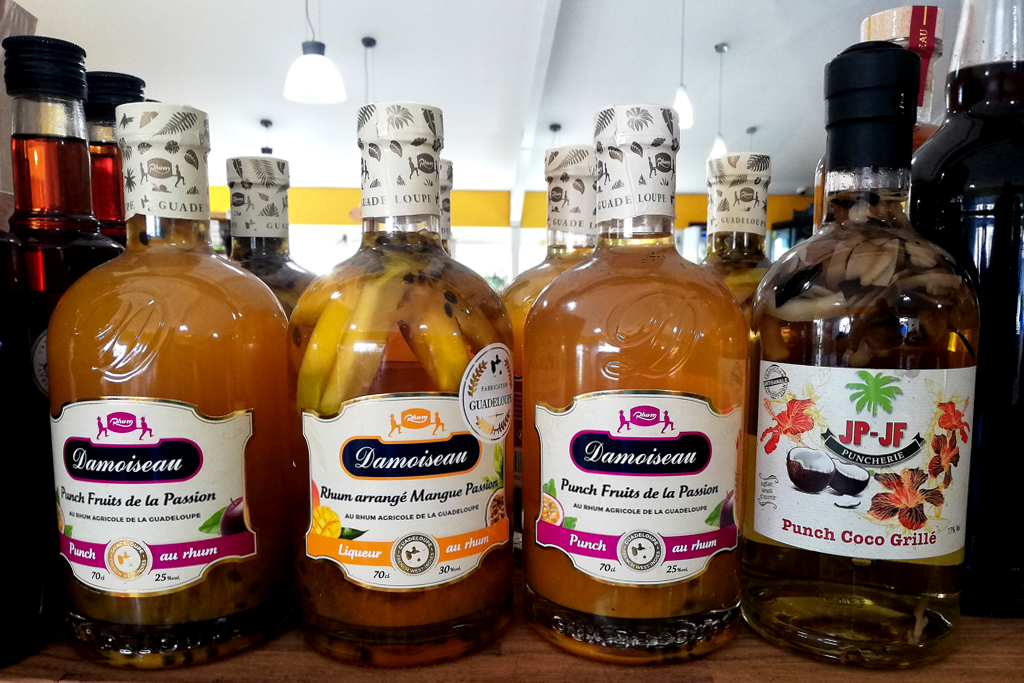
Also, at the end of the day, these markets frequented by travelers all offer the same stuff: vanilla, cinnamon, and other spices, as well as rum and homemade punches. Then, there are all sorts of kitchen utensils and stationery in the typical Madras checkered design.
Everywhere around the island.
At the first market, you think, oh, this checkered case is quite pretty.
At the second market, you realize, ah, there’s the checkered case again.
And the third one makes you wish they had cases that were monochrome.
I don’t want to badmouth anything, I just want to explain why after four weeks you’re no longer hopelessly enthusiastic about everything you see.
I ended up not buying any souvenirs at all, by the way.
On the Waterfront
Sainte Anne is mostly famed for her amazing shores. The three most popular beaches are Plage de la Caravelle, Plage Bois Jolan around two kilometers east of the city, and Plage du Bourg.
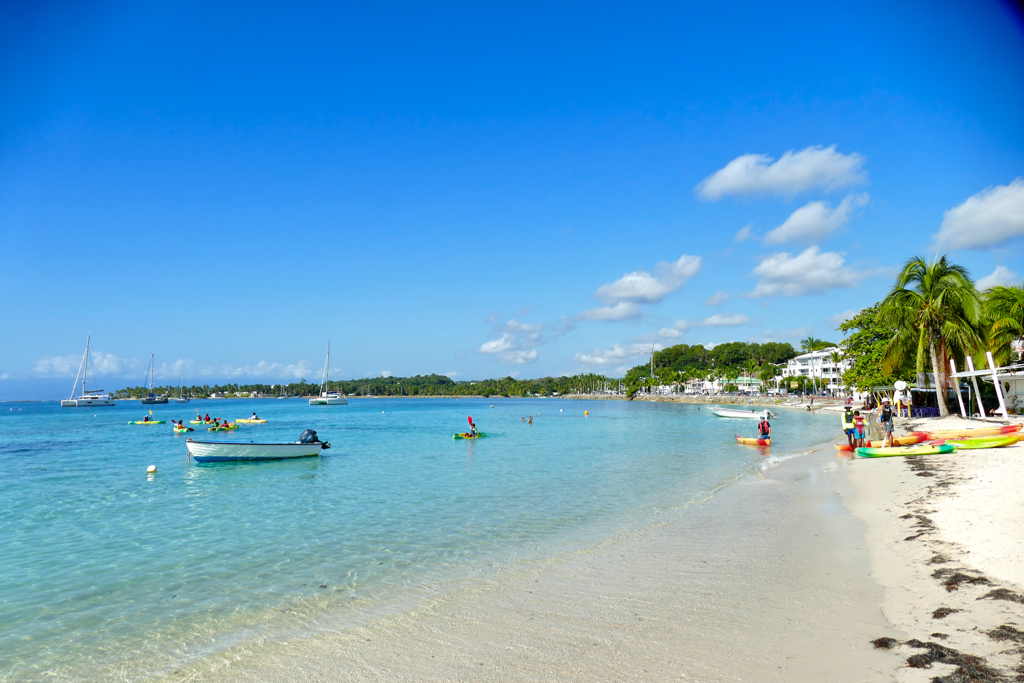
The latter is the city beach and one of the most famous beaches on the entire island. A coral reef allows even small kids to swim safely in clear’n’calm waters. It is surrounded by restaurants of all kinds so you can eat on-site and enjoy a beautiful day on the beach. However, that’s also the reason why it is always packed. On Sundays, you have to be there really very early otherwise you might not find a single available spot. Also, that’s the day when local families join the many French long-term vacationers.
However, the beach is lit in the evening which allows you to swim even after dark.
Plage de la Caravelle
To be honest, it’s not absolutely true that you shouldn’t look for me in all-inclusive resorts as I spent most of my beach time right in the heart of Sainte Anne’s Club Méditerranée.
Yet, I wasn’t a guest.
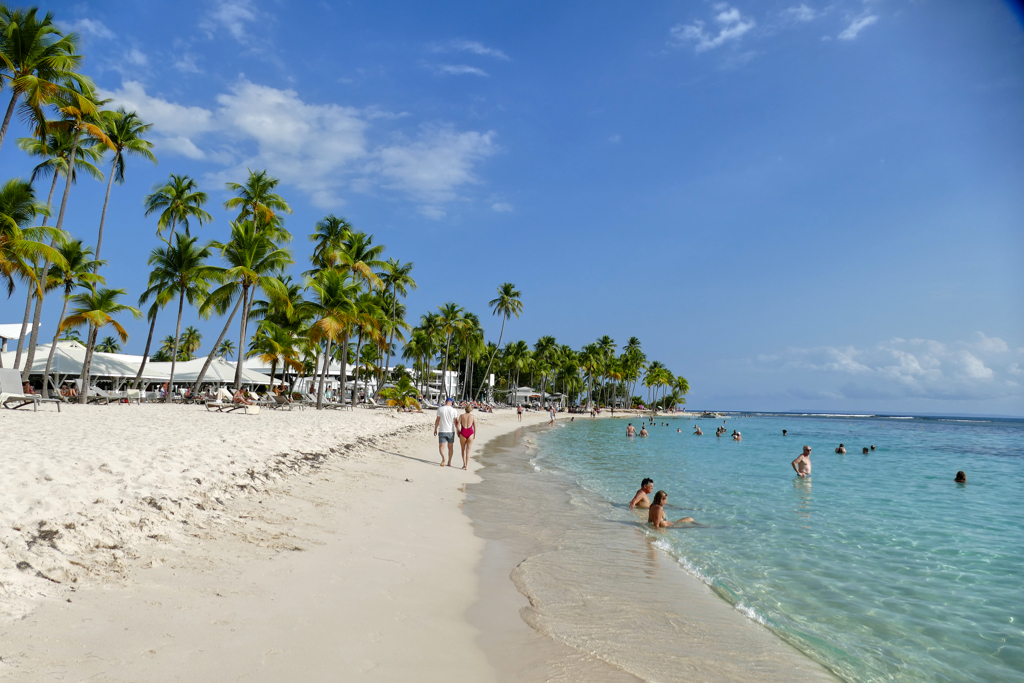
The thing is that in Guadeloupe, beaches are public. This means that the Club Méditerranée sets up loungers on the Plage de la Caravelle and also has some permanently installed facilities. But it remains a public beach that everyone can use. You are not allowed to spread your towel on one of the loungers, obviously, but right next to it. I even went so far as to lie down in the shade cast by the roof of an open beach lounge. I got dirty looks, yes, but they couldn’t chase me away because I was lying on public sand.
So if the status of being a pleb amongst members of the French bourgeoisie doesn’t bother you, this beach is an awesome place.
However, if you prefer, you can buy a day pass for the Club Méd for just under $100. This includes the use of the outdoor area, food and drinks – and the feeling of not being a pleb but belonging to the somewhat rich and famous.
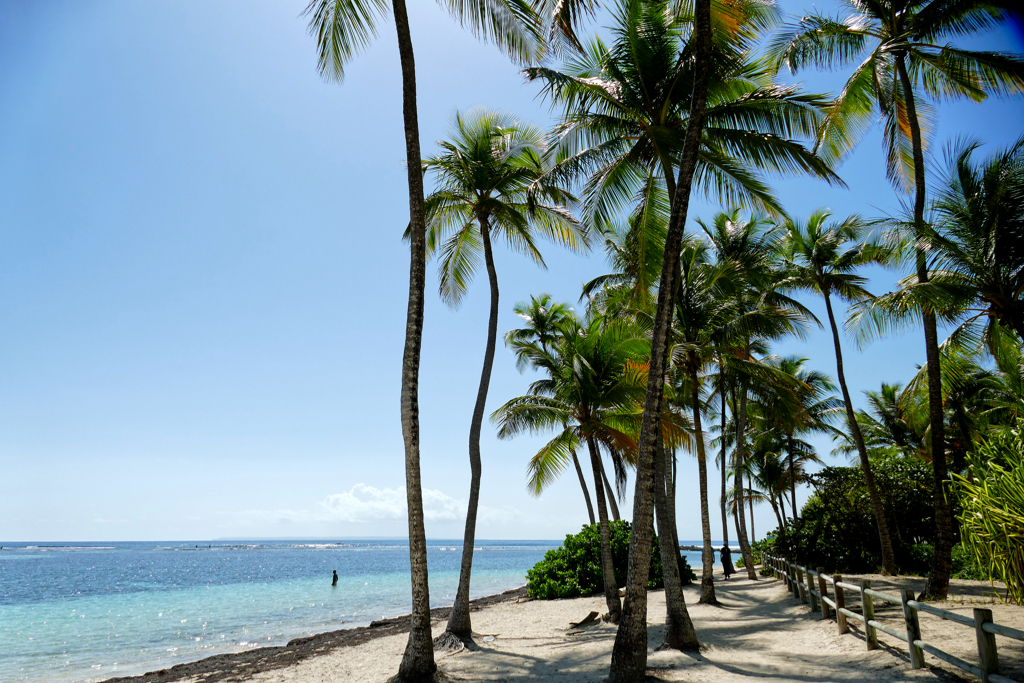
I don’t know if it’s this feeling of a two-tier society that keeps most people from lying down on the very beautiful, long and wide main beach. In any case, they prefer to look for a spot in one of the small bays east of the Club Méd orbit. There, you find also some stalls with local snacks, and the atmosphere is very laid-back.
However, it can get packed here, especially on weekends.
Plage Bois Jolan
“My favorite beach is Bois Jolan”, recommends my lovely landlord. And indeed, this beach is a feast for the eyes. It is a long yet narrow stretch of two kilometers of the finest sand lined with coconut, seagrape, and almond trees. The color of the water goes from emerald green to the deep blue of ink.
Since a coral reef protects the bay of Bois Jolan, the waters are calm and the currents very weak. This makes it the ideal place even for young kids. Also, some simple beach cabins grant greater comfort.
In the past, it was possible to walk from Sainte Anne to Bois Jolan on the beach. But since this part of the beach no longer exists, you would have to walk the five kilometers along the road. That’s at least an hour. But even if you take the bus to the Bois Jolan stop, it’s still a 20-minute walk to the beach. Just sayin’.
Saint-Francois
It’s about 16 kilometers from Sainte Anne to Saint François. Depending on the traffic, the public bus takes you there in 45 minutes max. On the way, you pass another seaside hotel area including a casino and an 18-hole golf course. In short: Everything I personally don’t need as I’m rather the Dora the Explorer type of a tourist.
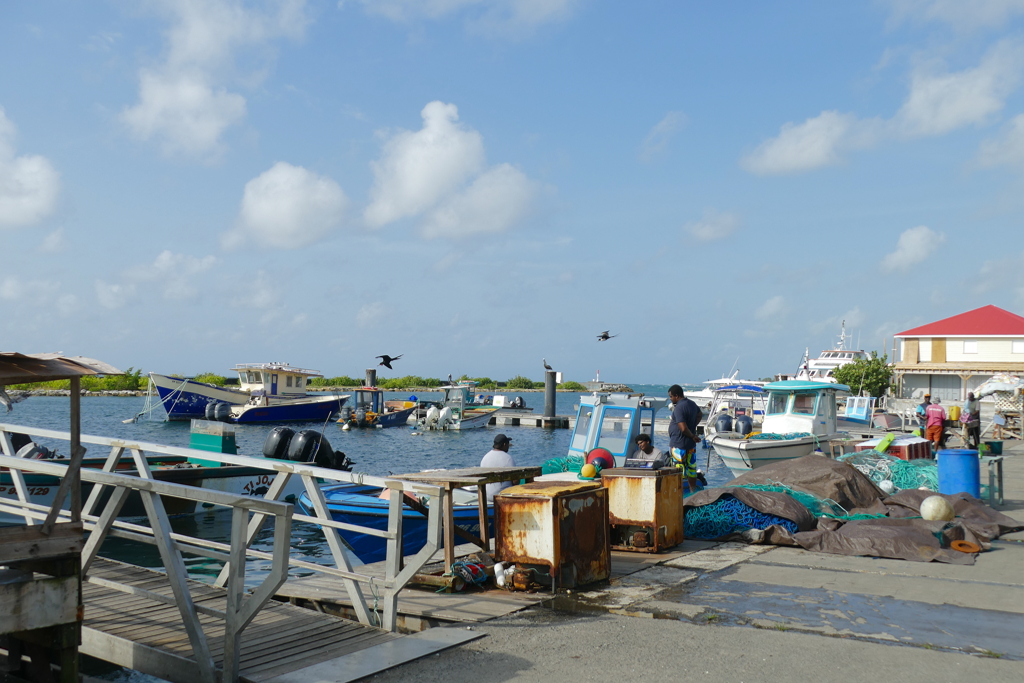
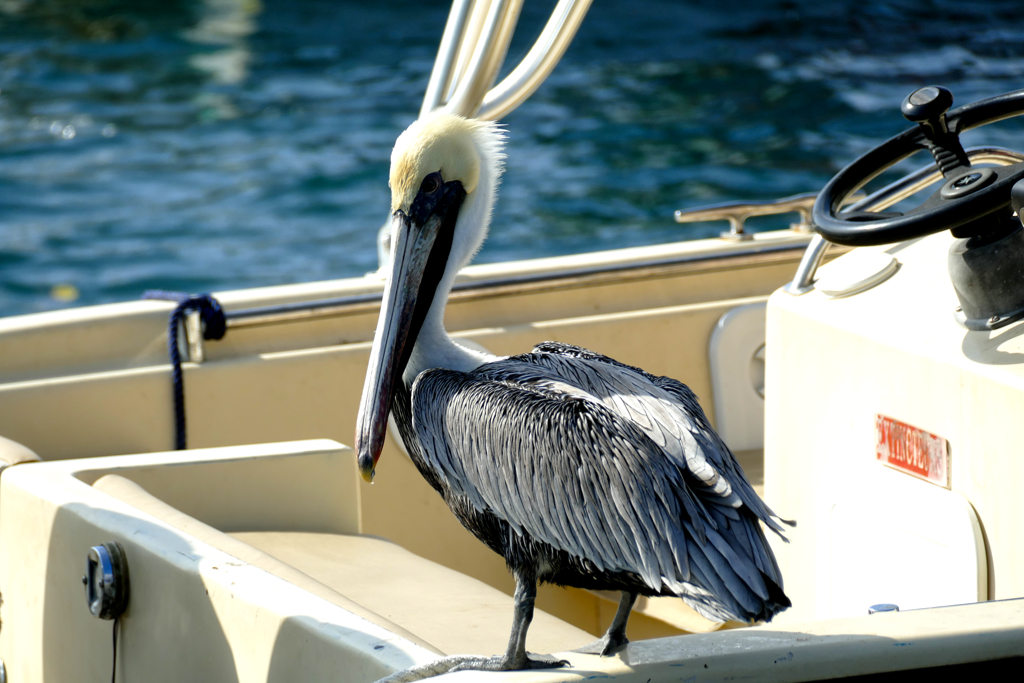
Once we reach the main bus station, I’m in the heart of a charming old town and thusly in my element. The station is right next to the ferry terminal on a small headland from which you can look west towards Plage de Raisins Clairs. It’s actually one of the most beautiful of Guadeloupe’s dream beaches. By the way, I put together a post introducing The Best Beaches in Guadeloupe You Can Easily Visit by Public Bus, so you might want to check that one out.
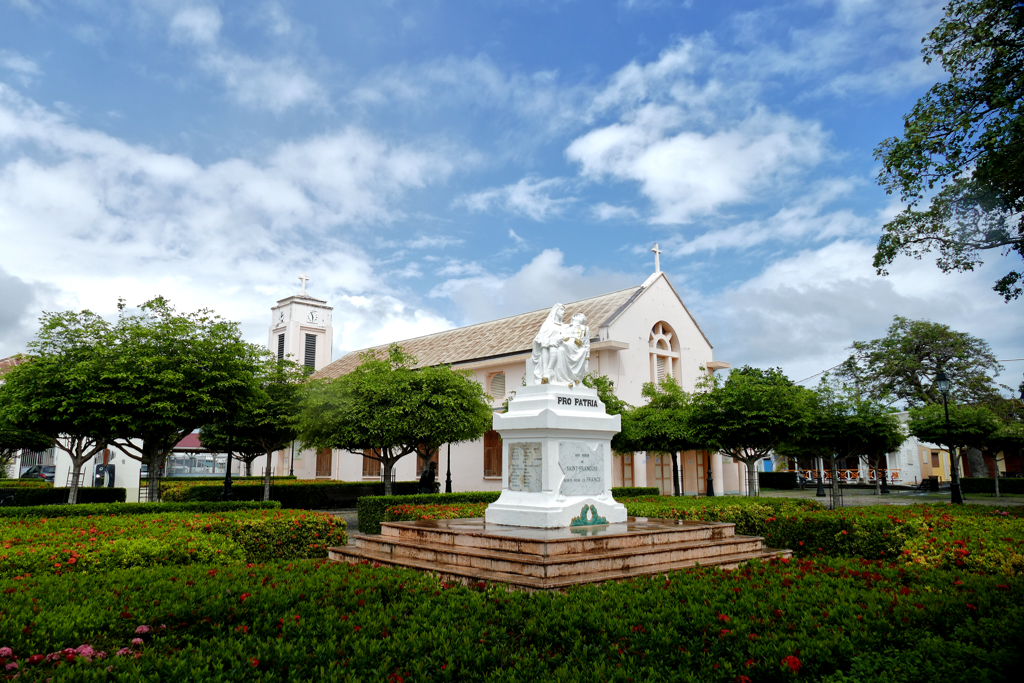
To the east lies an authentic fishing port where fishermen sell their catch directly from the boat. Despite the peaking tourism, agriculture and fishing are still Saint François’ key economic sectors. As a matter of fact, the fishing port of Saint François is the second-largest in the archipelago in terms of the number of fishermen. It is also a major hub for passengers going to the islands La Désirade, Marie Galante, and Les Saintes.
My Tip:
The Aqualodge Guadeloupe* rents floating bungalows in Saint-François. In addition to a bedroom, they include a seating area, a fully equipped kitchen, and everything else you could want in a holiday apartment. You can go straight from the boat into the water. Since Aqualodge Guadeloupe* has underwater lighting, you can even go for a swim after dark. Of course, the location of the houseboat is particularly fantastic. In order to be able to come ashore at any time, a small inflatable boat with a motor is provided.
Taking a Shower
Howsoever, everybody comes to Saint François for the amazing beaches. While the city beaches like Plage de Raisins Clairs are already great, the real beach wonderland begins east of town at Anse du Mancenillier. From there, it gets better little by little. The sand gets finer, the water gets clearer, it’s like a dream come true.
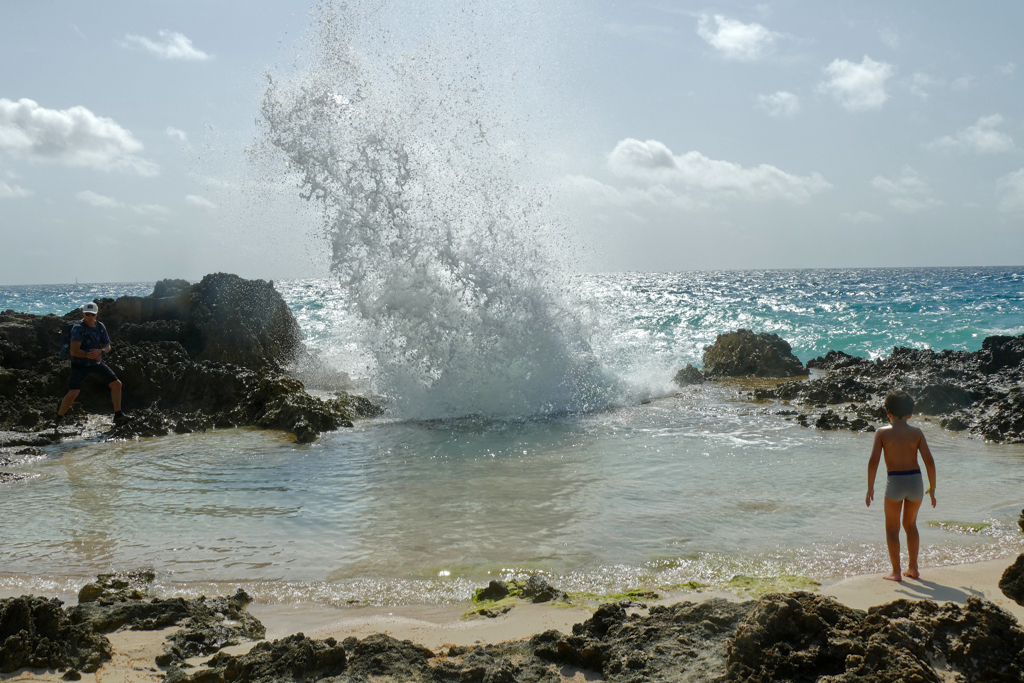
Finally, at Anse Kanouanne, nature has created a quirky landmark called La Douche. Seawater mostly comes in small waves into a basin formed in the rocks on the shore. Yet, when the sea is rougher, the waves hit the edge of the pool with such force that they eject like geysers and shower everyone standing nearby. It’s not really dangerous, but still, be very careful and don’t go too close to the edge. Remember: An Instagram post isn’t worth harming your loved ones or yourself.
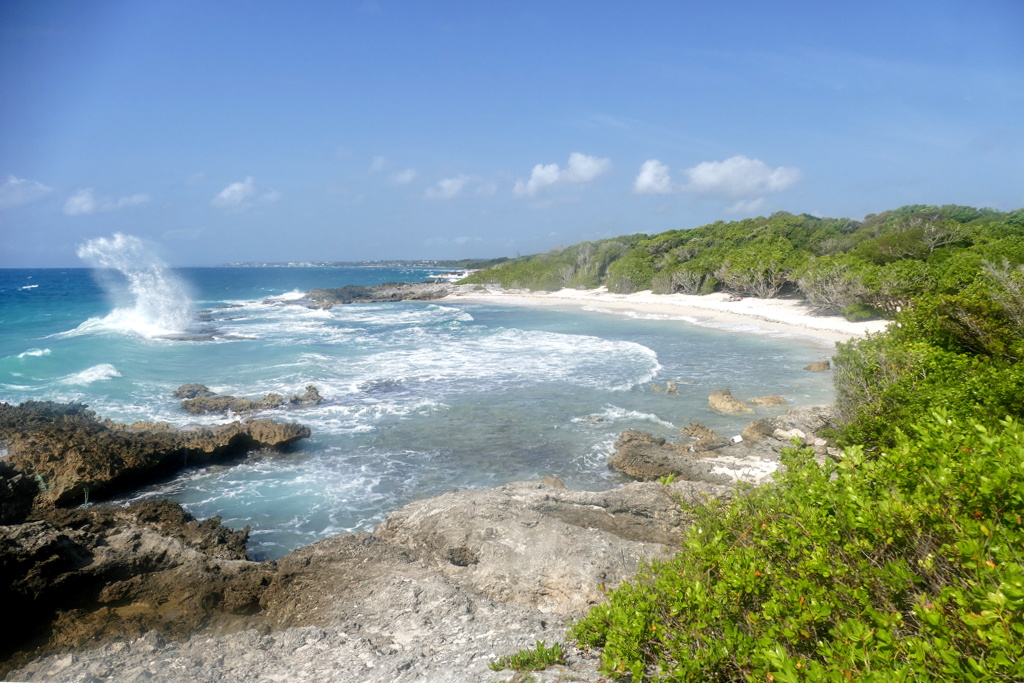
There’s a lovely small beach right next to La Douche where you can take a pleasant break after your salty shower.
Pit Stop at an Art Venue
Although there is no bus stop right next to La Douche, the driver stopped for me, saving me a walk of about one kilometer. After my visit to La Douche, I continued on foot. The next stop was a good 20 minutes away.
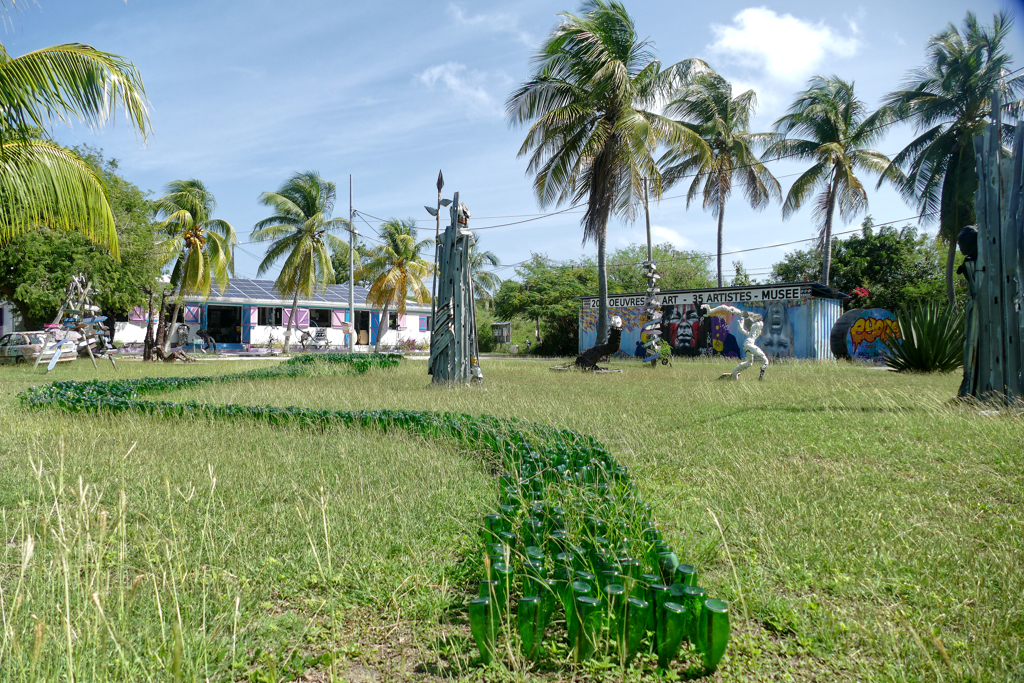
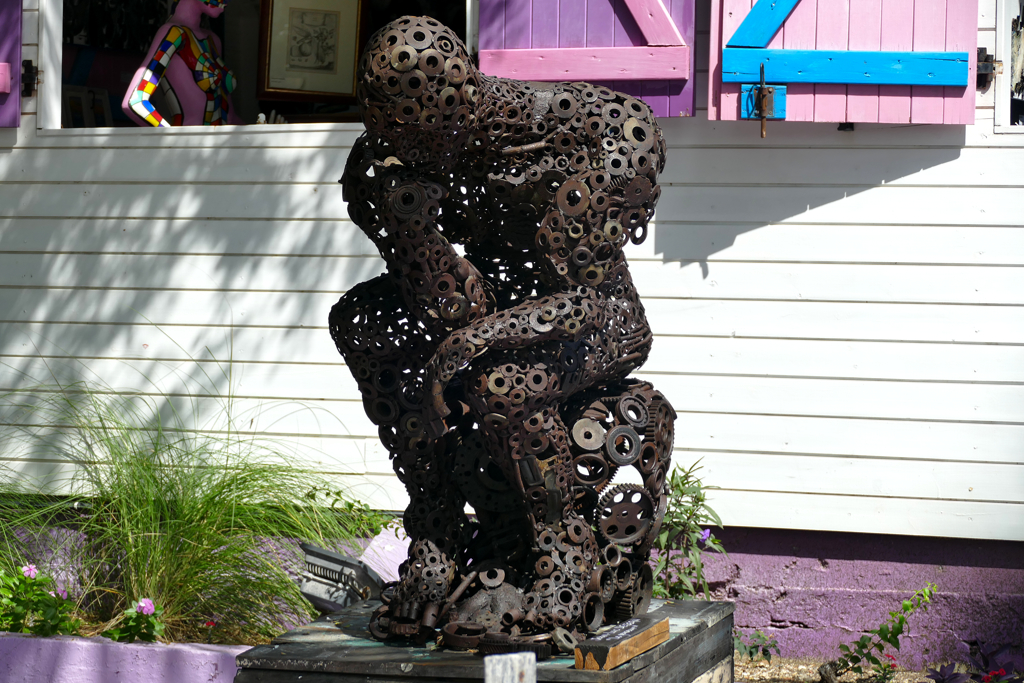
Gallery Kreol West Indies exhibits great works by local artists and sells unique souvenirs. So if you meander in this area anyway, it’s worth a visit. They are open every day from 9 a.m. to 1 p.m. and after a lunch break again from 2 p.m. to 6 p.m.

From there it takes around 15 minutes via a dead-end road to what I consider the most beautiful beach on the entire island, namely the Plage d’Anse à la Gourde.
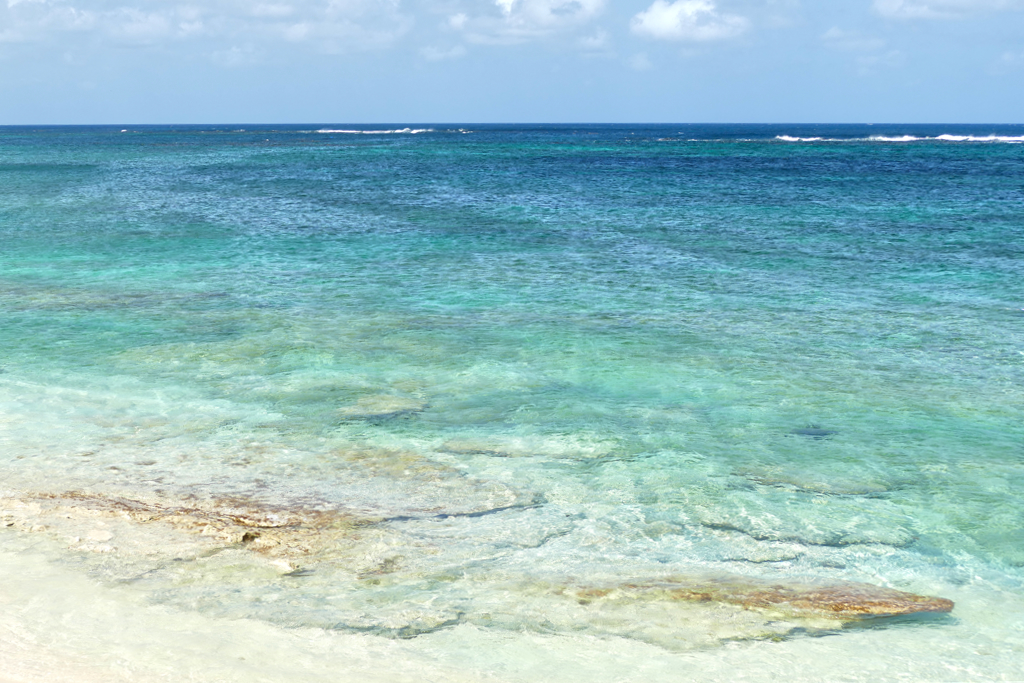
The only disadvantage is the very shallow vegetation in this area, which of course provides much less shade than seagrapes or palm trees. I literally had to crawl through the undergrowth next to the path in search of a place in the shade.
Really, Renata, that was your biggest problem?
Really?
Well, lucky you!
On the Road Beach Again
From La Douche it is around six kilometers to the top of Pointe des Châteaux. So it’s a route that can be completed in around an hour and a half. You don’t have to walk along the road all the time either. For the most part, you can walk along the beaches both north and south of the peninsula. Yet, don’t underestimate the heat. Plus, like me, you’ll probably be carrying a lot of stuff for your day at the beach.
Hence, you might want to hop on the next bus.
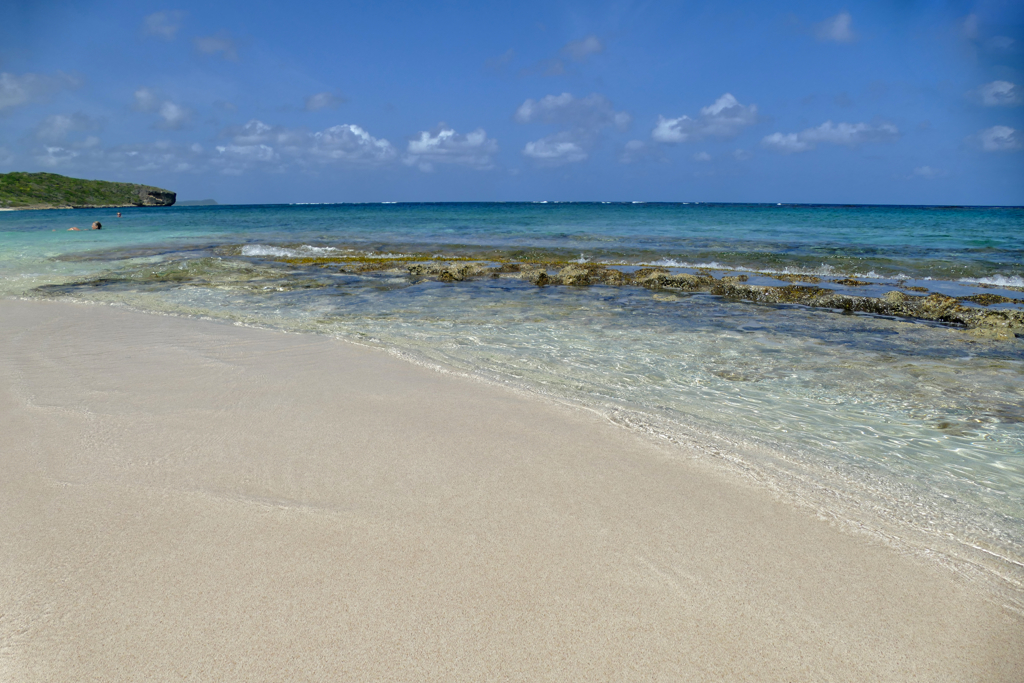
If you still decide to walk, you can of course do it in stages: First from La Douche to Anse à la Gourde. After a dip and possibly a nap, you continue past the nudist beach Pointe Tarare all the way to Grande Anse des Salines. From there, you can reach the foothills of the nature reserve in another twenty minutes.
When planning your hike, keep in mind that you also want to explore the nature reserve walking. Also, you shouldn’t underestimate the climb to the viewing point at the cross.
I’d suggest you take the bus at least for a part of the trip.
My Tip
The Karu’lis buses have a fixed timetable, but the actual time depends heavily on the traffic. Since the road from Saint François to the tip of the peninsula is not busy, the bus gets through just fine. This means that he can be at the stop up to twenty minutes earlier!
Are you kidding me?
Nope, I experienced it myself. While I was still thinking about how I could while away the 20 minutes that were still scheduled until the bus arrived, the bus came already roaring.
I would have missed it if I had been on time instead of far too early.
You live, you learn: That was a lesson for me on all future trips.
I have summarized this and six other crucial tips for travelling by public bus in the How to Get Around section below.
Pointe des Châteaux
Pointe des Châteaux is a wide coastal strip. It is a geological formation consisting of a sedimentary layer of limestone that formed underwater for several million years. There is often a strong wind that the flat vegetation offers no resistance. The calcareous soil is the perfect ground for partly endemic flora and fauna. Therefore, The site is enchanting to look at and at the same time a real natural treasure.
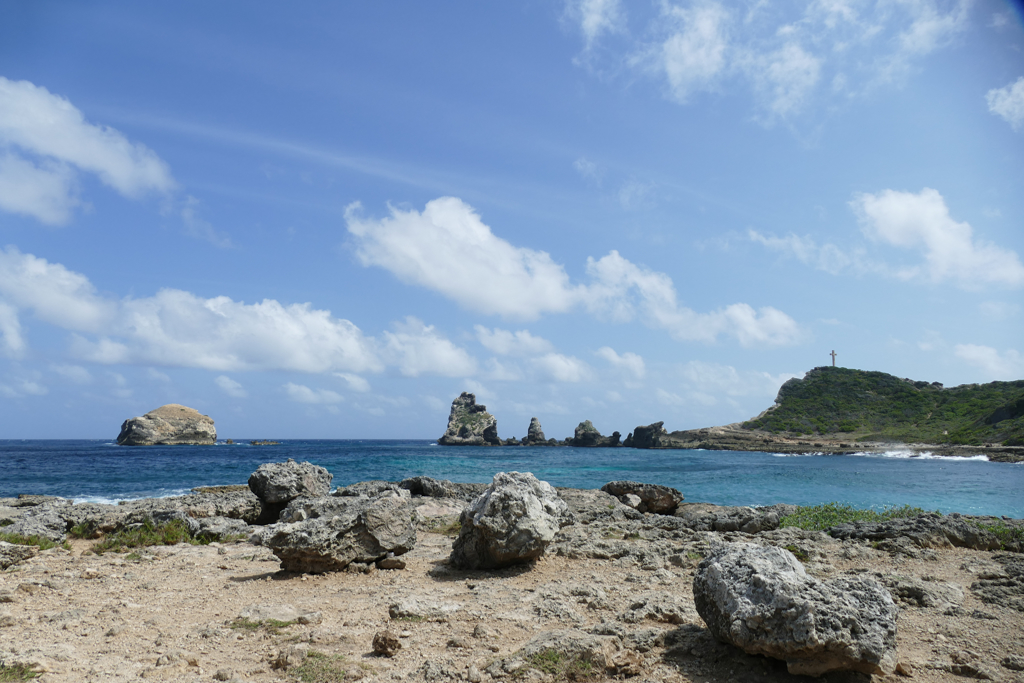
The climb to the cross, located at the top of the Pointe des Châteaux, offers an indescribable panoramic view of Grande Terre to the west. To the east, you can see the island of Désirade over some rocky peaks. The islet is only eight kilometers away.
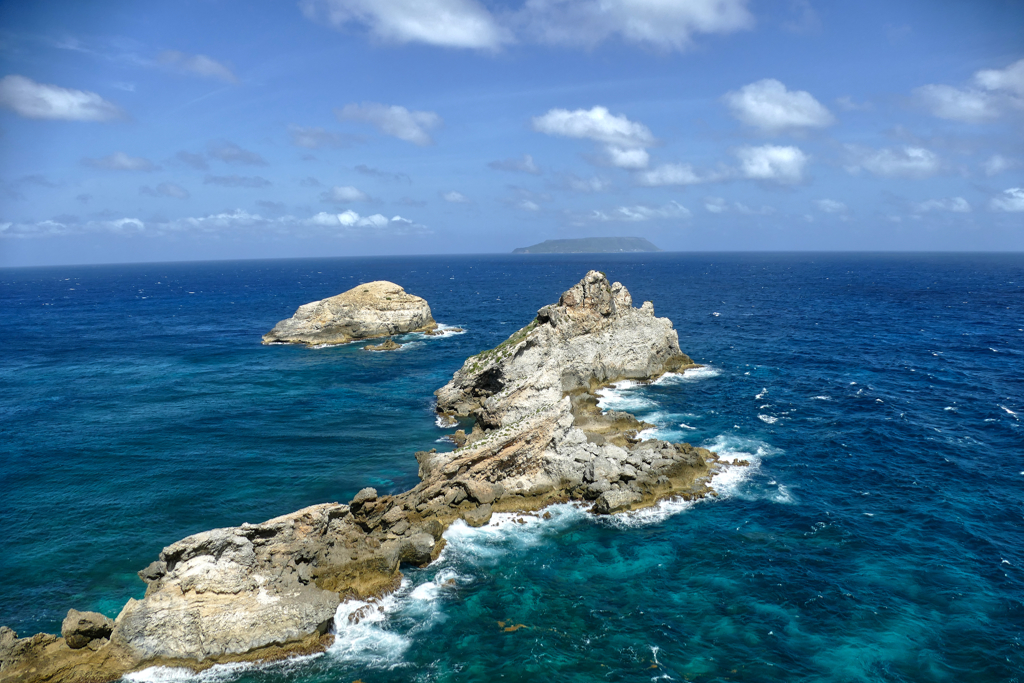
Due to the high waves and strong currents, you should be very cautious when swimming at Grande Anse des Salines.

Inglorious History
Clearly, you can always look at history from different angles. Even when it comes to the inglorious days of colocalization and slavery. For instance, there are quite a few people who still admire the wealth of the plantation owners. They delight in the magnificent furnishings of the spacious mansions. They admire the precious dresses of the beautifully dressed ladies and romanticize life on the plantations.
What, was there something else? I have no idea what you are talking about.
Others know how to enjoy the pleasant aspects of the island, but still do not ignore why there is no longer any indigenous population there today. What happened in the past that the inhabitants are mostly descendants of abducted slaves? And no offense, but isn’t it a bit absurd that a Caribbean island actually belongs to Europe?
The paths of these two groups of travelers are likely to cross on the beaches of Grand Terre and the hiking trails of Basse Terre. Otherwise, they will probably visit very different landmarks: Some will admire the old mansions like Habitation Zévallos while others will climb up the Marches des Esclaves in Petit Canal.
In my posts on the West Indies, and any other former colonies, for that matter, I strictly refrain from any kind of romanticizing the past. Therefore, you won’t find any Gone with the Wind sentimentality in my guides to the three towns Le Moule, Petit Canal, and Port Louis.
Let me tell you, the good old days were good for just a tiny few.
Le Moule
The town of Le Moule was founded on the right bank of the Audouin River in the mid-17th century. It was later moved to the left bank to boost its trade activities.
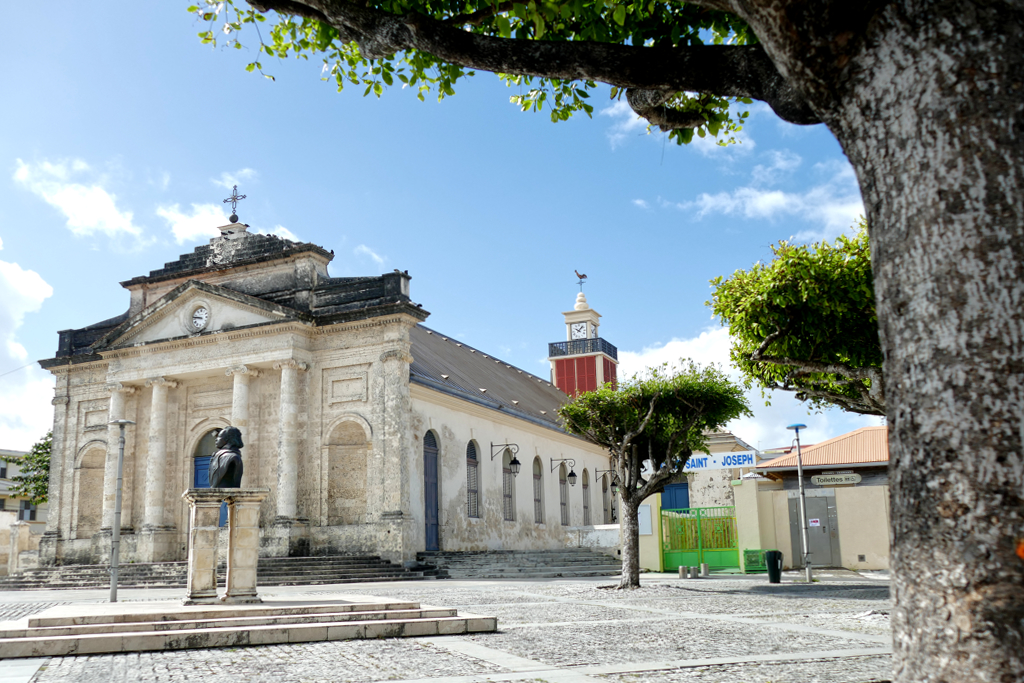
In the 18th century, the city developed into a stronghold of the colonial aristocracy. Sugar cane grew on vast plantations around the city. At the same time, Le Moule had the privilege of being Guadeloupe’s only town on the Atlantic coast. To ensure the defense of its important port, a first fortress was built around 1760. Since it was dangerously close to the city, a second fort was added in 1840.
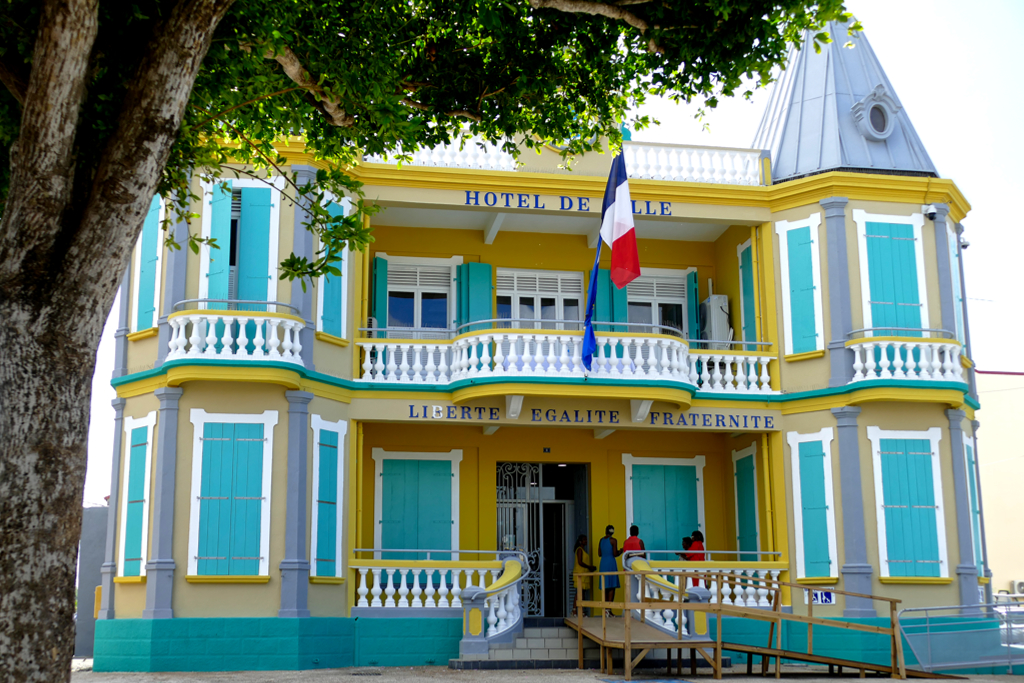
Its access to the Atlantic Ocean made Le Moule an influential overseas port. Long before Pointe-à-Pitre was even founded, large sailing ships docked at Le Moule. From there, they transported rum and sugar to Europe. This export was part of the infamous triangular trade and brought the colonial rulers great wealth.
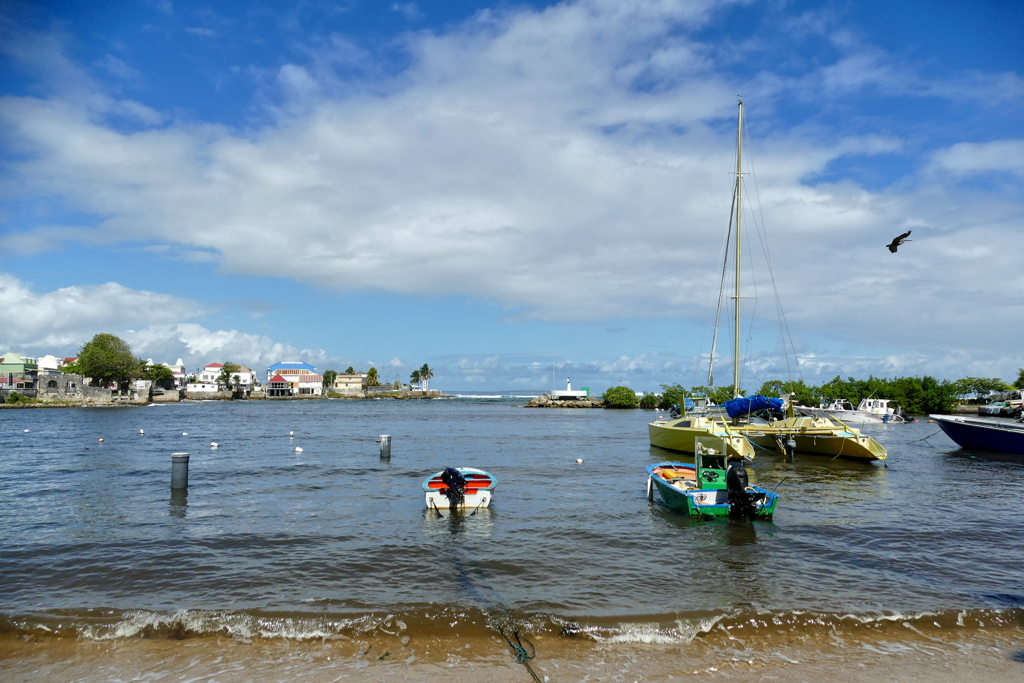
The Okeechobee hurricane of 1928, mentioned above, destroyed many of the magnificent colonial mansions. However, you can still visit the colonial estate of Zévallos, the former home of a sugar plantation. As I mentioned above, it is a sister building of today’s Saint John Perse Museum in Pointe-à-Pitre.
Out of Le Moule
There’s a bit more to see in Le Moule than in most other towns in Grand Terre, but after an hour or an hour and a half you’re done.
And now?
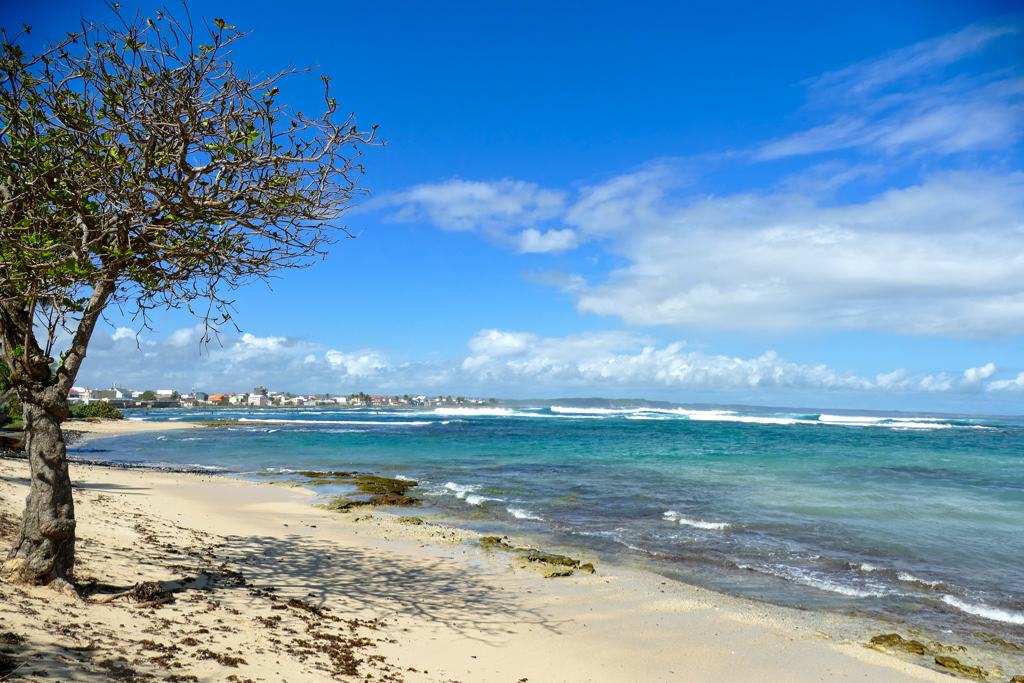
As I said above, you can visit Habition Zévallos. Also, the Damoiseau distillery is only around four kilometers west of Le Moule. Damoiseau is the leading rum producer on the island. While it is one of five distilleries in the archipelago, it is the only one in Grande Terre. The site can be visited, and the products are also sold in their store.
You can also walk along the north coast, beach by beach, eastwards to Porte d’Enfer. Once you get there, just enjoy the great views but do not go for a swim. The waves and the current are just too dangerous.
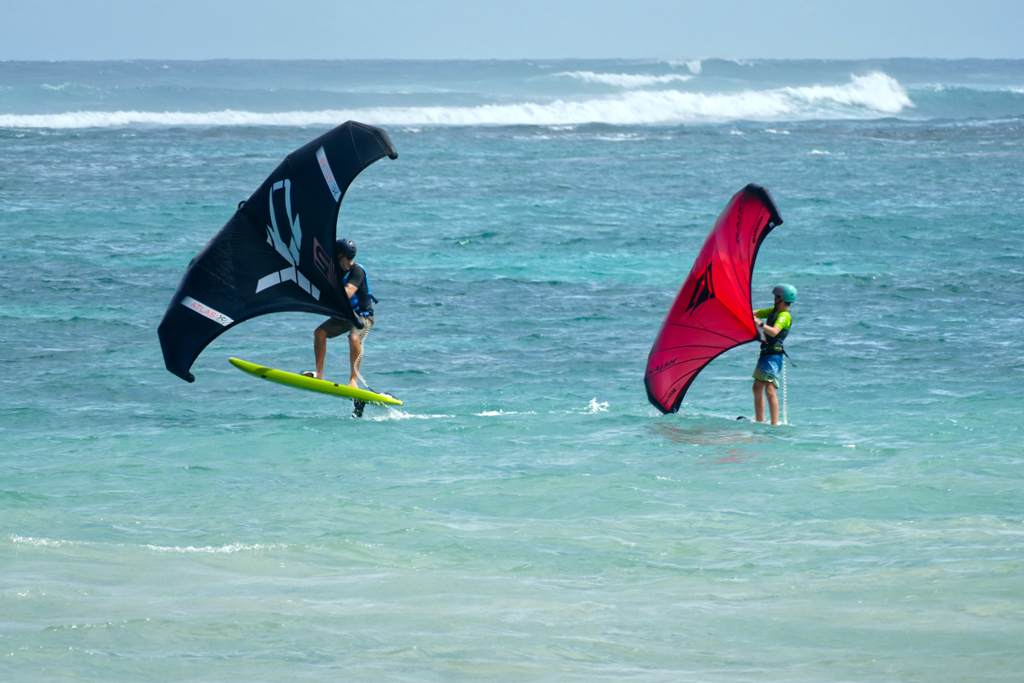
I’ve had my fair share of plantation houses, distilleries, as well as wild cliffs. Therefore, it came in handy that the Plage de l’Autre Bord was a short distance away. Simply cross the bridge onto the right bank of the Audouin River and after about ten minutes you will be on what is definitely one of the best beaches I’ve been to on my entire trip. It is long and wide and offers not only enough shady vegetation, but also the so-called carbets, open beach cabanas. They are available to everyone free of charge.
My Tip:
I want to clarify one thing: When I write things like I’ve had my fair share of this and that, I don’t mean it in a derogatory way. It’s just that a lot of the iconic things in the West Indies repeat themselves: There are so many incredible beaches, lush sugar cane fields, rum distilleries, black and white checkered graveyards, and colorful markets everywhere.
This is not bad, that’s actually good as it allows you to visit places when they conveniently fit into your itinerary. If you cannot visit a certain distillery, then you visit a different one in another place. You won’t be able to see everything, anyway, unless you spend a couple of months in the archipelago. Therefore, it’s good to slow down and take the pressure off of having to see everything everywhere.
Circle Trip by Public Bus
Since Le Moule is one of the very few places that is served by both bus companies on the island, you can take a great circle trip starting for example in Sainte Anne.
Take the Karu’lis morning bus #SA3 from the town hall in Sainte Anne to Le Moule. After exploring the town and an extensive visit to the beach, you can then take bus #111 at the L’Autre Bord stop. Unfortunately, Google Maps won’t show you this connection, and you won’t find it in the Karu’lis app either as the coach belongs to a different bus company. Therefore, I marked the exact location of the stop on the map at the end of the post. In only twenty minutes, the bus will take you to Saint François where you can, for example, enjoy the rest of the day on the Plage des Raisins Clairs.
To get back to your starting point, just hop on one of the various buses going westwards from Saint François. You’ll find them on the Karu’lis App as well as on their website.
Petit Canal
A place you cannot miss out on when you want to honor the dark side of Guadeloupe’s history is the town of Petit Canal. It was founded towards the end of the 17th century in this very privileged location. The area has huge fields of sugar cane, and the proximity to the Canal des Rotours made it possible to carry the stalks straight to the Duval sugar factory. Eventually, Duval distilled rum instead of producing sugar and finally closed down in 1961.
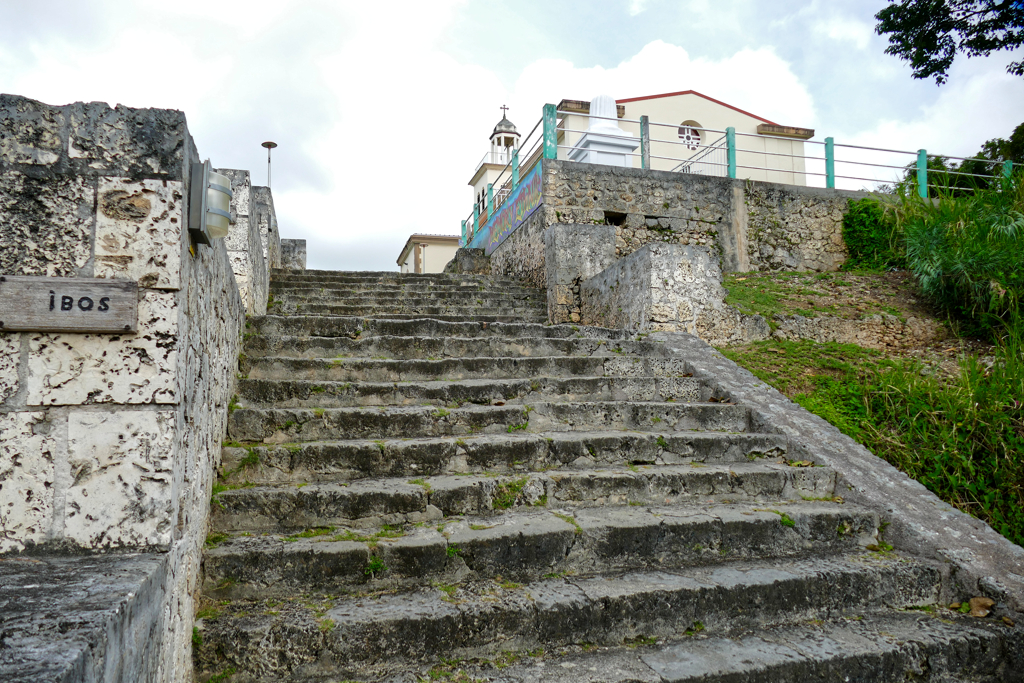
Yes, a lot was going on economically in Petit Canal in the past. The winners and tragic losers in this inhumane trade are undisputed: The small fishing port overlooking the Anse du Canal served as a dock for the ships bringing human cargo from Africa.
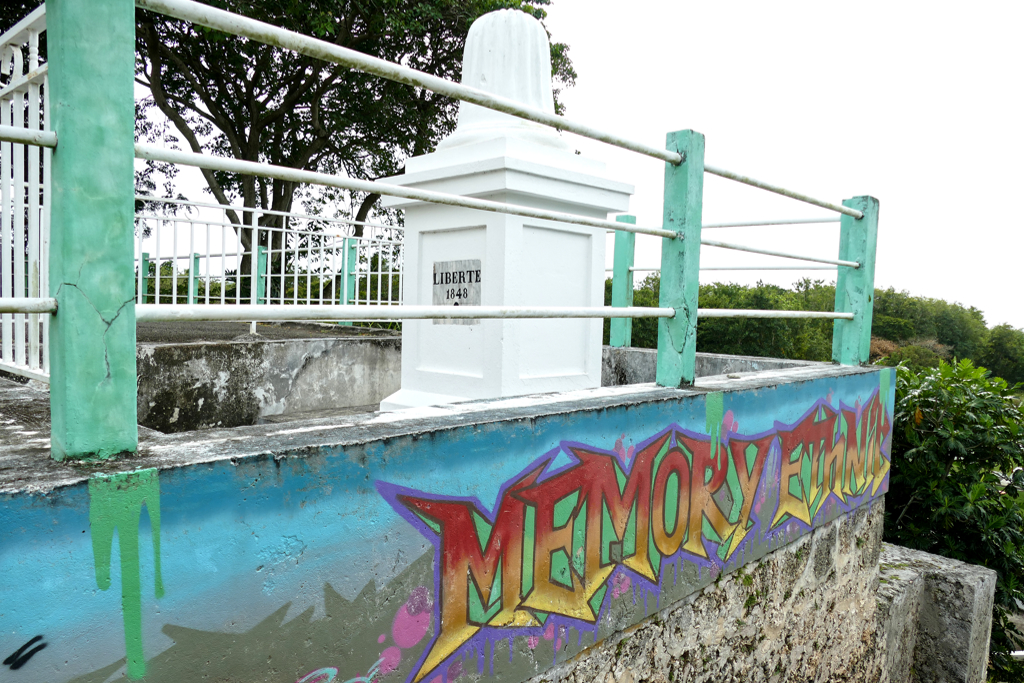
The so-called Marches des Esclaves, hence, the staircase of the slaves, is the most iconic landmark in the entire region. Yet, the Africans that were brought here for sale did not climb it. In fact, it was built only after the abolition in 1848. Nevertheless, there are memorial plaques on the steps bearing the names of the tribes that were brought to Guadeloupe.
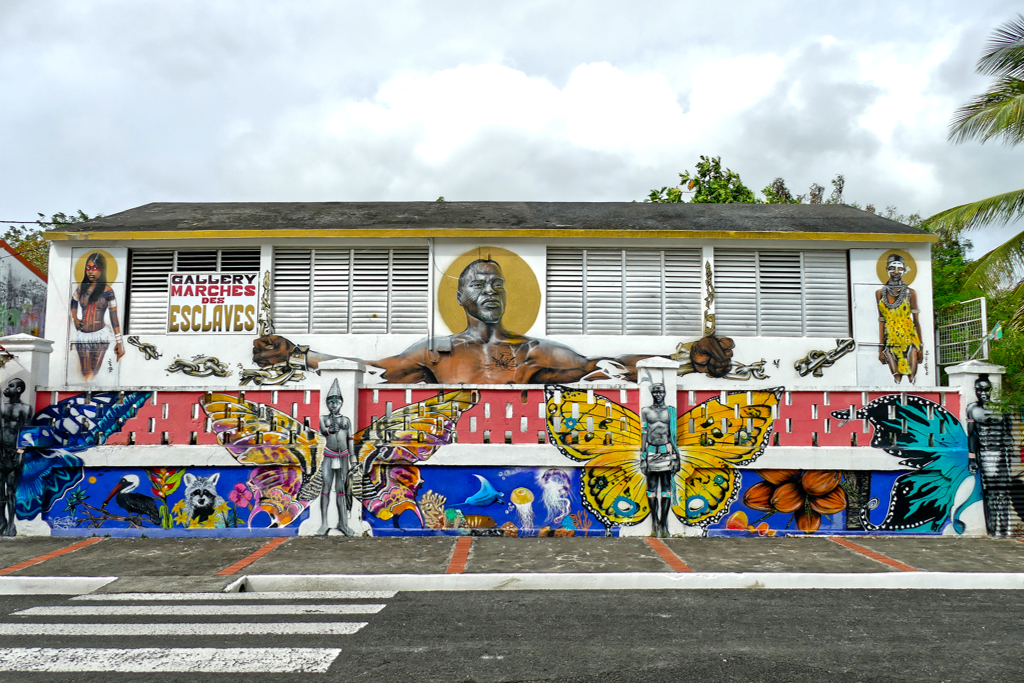
Below the steps is a monument representing the eternal flame of the unknown slave. There is also a bust of Louis Delgrès, the leader of Guadeloupe’s resistance movement against Napoleon’s reintroduction of slavery in 1802.
In Ruins
The famous ancient prison of Petit Canal is next to a slope leading from the memorial up to Église Saint Philippe et Saint Jacques.
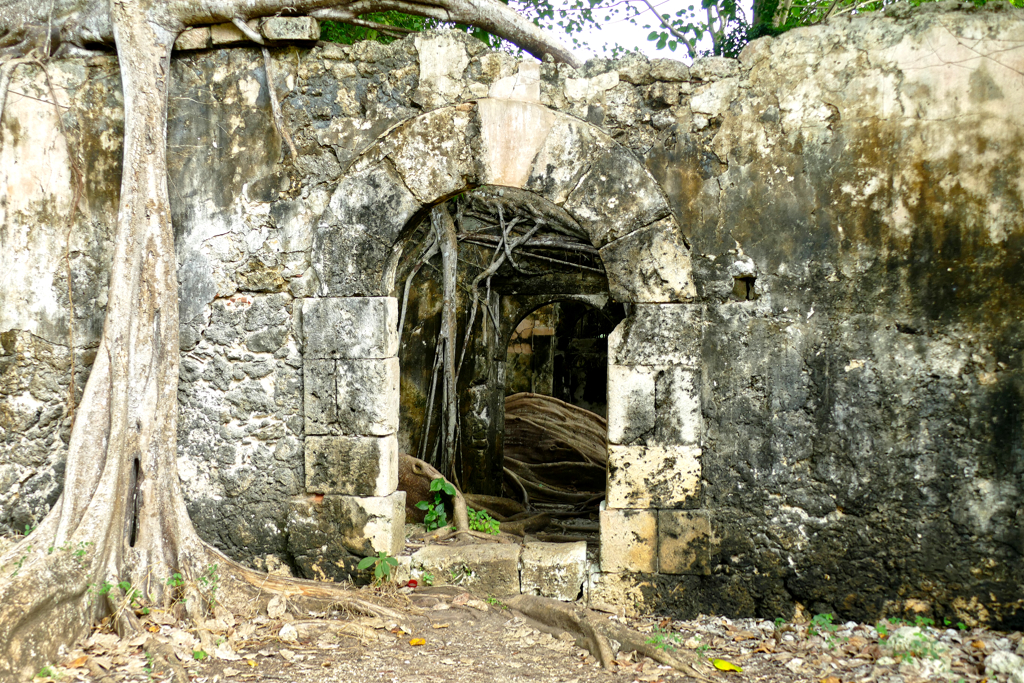
It was built in the 19th century, and as it often goes in lands steeped in history, myth prevails over reality. Hence, there are several legends about what went down between these old walls. Like the one that claims the most recalcitrant slaves were locked up there and at times forgotten.
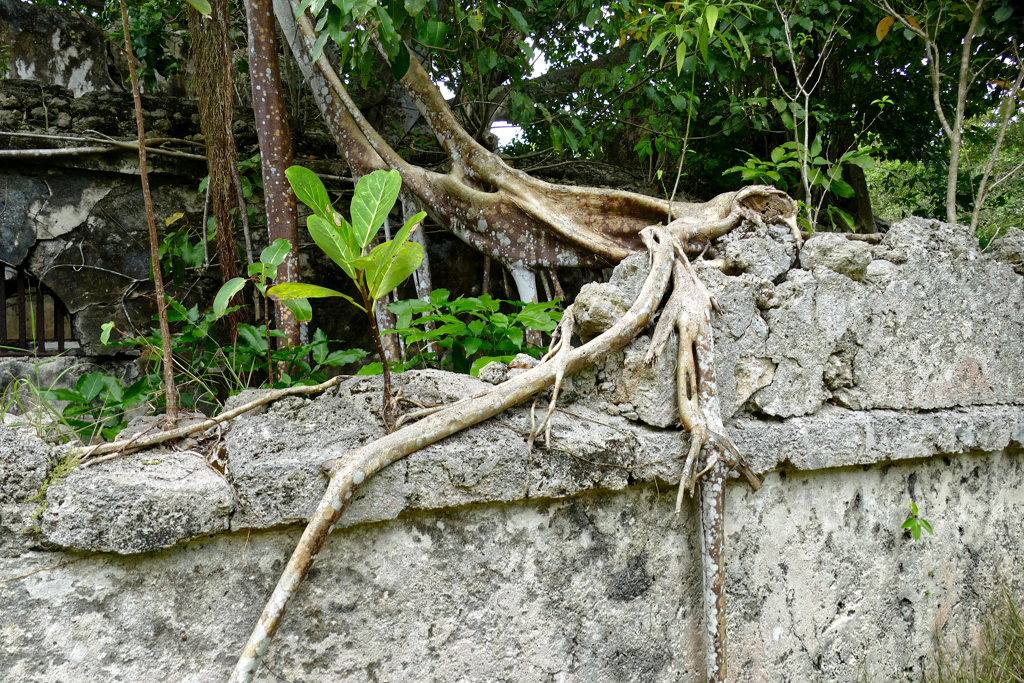
In the middle is a fig tree that has a firm grip on the ruins. It is said that it grew here because the slaves forced to build the prison had sowed fig tree seeds on the site. They wanted to take revenge for the forced labor and hoped that time would avenge their enslavement.
Even more outlandish is the story about the famous inmate Hégessipe Légitimus, a political leader of the local trade union movement. While he was imprisoned here, gendarmes looked for him and couldn’t find him anywhere. Instead of him, there was a new fig tree growing in the prison yard.
Regardless of whether there is any truth to these stories, over the years, the tree has taken over the ruins so much that the roof and most of the trellises have been displaced. Although the building is not that old, it is in a condition that suggests it was built well before the 19th century.
Every visitor to the site is immediately taken in by the very special atmosphere. You can literally feel the many painful destinies that are connected to this lost place.
After the Storm Was Gone
After the destructive cyclone of 1928, Monsieur Ali Tur built and rebuilt various buildings also in Petit Canal. Between 1930 and 1932, he re-constructed the town hall, schools, and housing for teachers as well as the church tower.
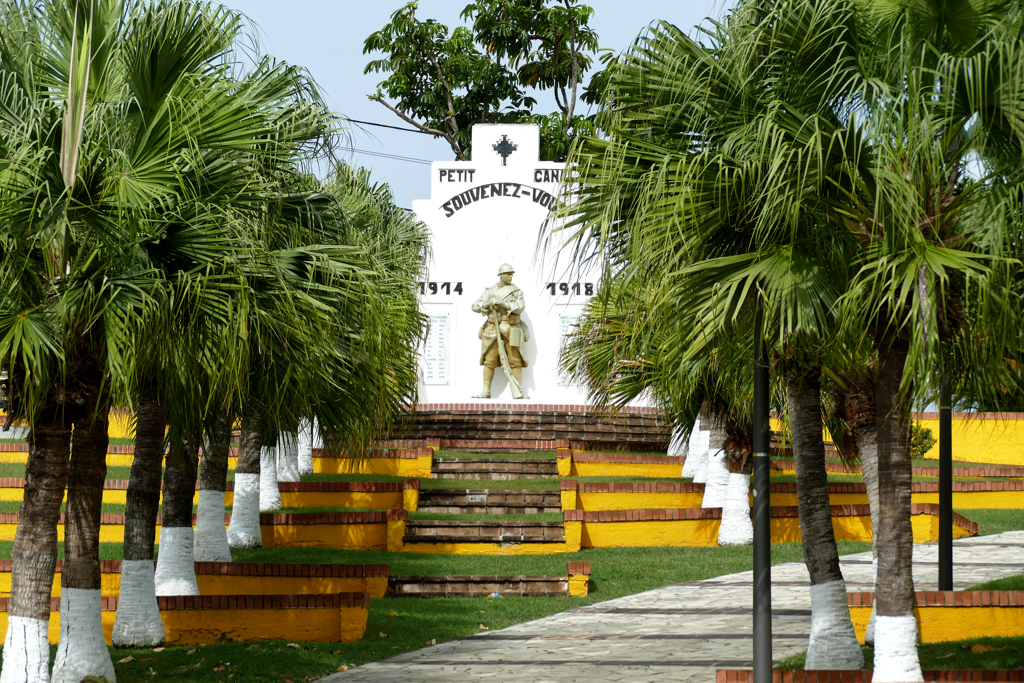
I must say, when it comes to installing war memorials that commemorate those who fell in WWI in very distant Europe, the local government has so far been much more generous than when it comes to memorials to slavery.
However, unless you are planning on joining a boat tour through the mangroves or a visit to the former Duval plant, one hour might be enough for a stop in Petit Canal. Since the public bus #102 runs more or less hourly, it’s really easy to include a pit stop of one or two hours before you continue to the beach of Port Louis. Obviously, you can also go to the beach first and stop at Petit Canal on the way back. Howsoever, the buses run between 6 and 7 a.m. and 7 and 8 p.m. depending on where your trip starts. Yet, keep in mind that your final connection might be earlier, hence, plan your itinerary thoroughly.
You’ll find seven crucial tips on how to explore Guadeloupe by public bus in the How to Get Around section below.
Port Louis
At the beginning of the 18th century, the town of Port Louis, named after Louis XIV, was one of the first sugar ports in Guadeloupe. Eventually, it was overtaken first by Le Moule and then by Pointe-à-Pitre.
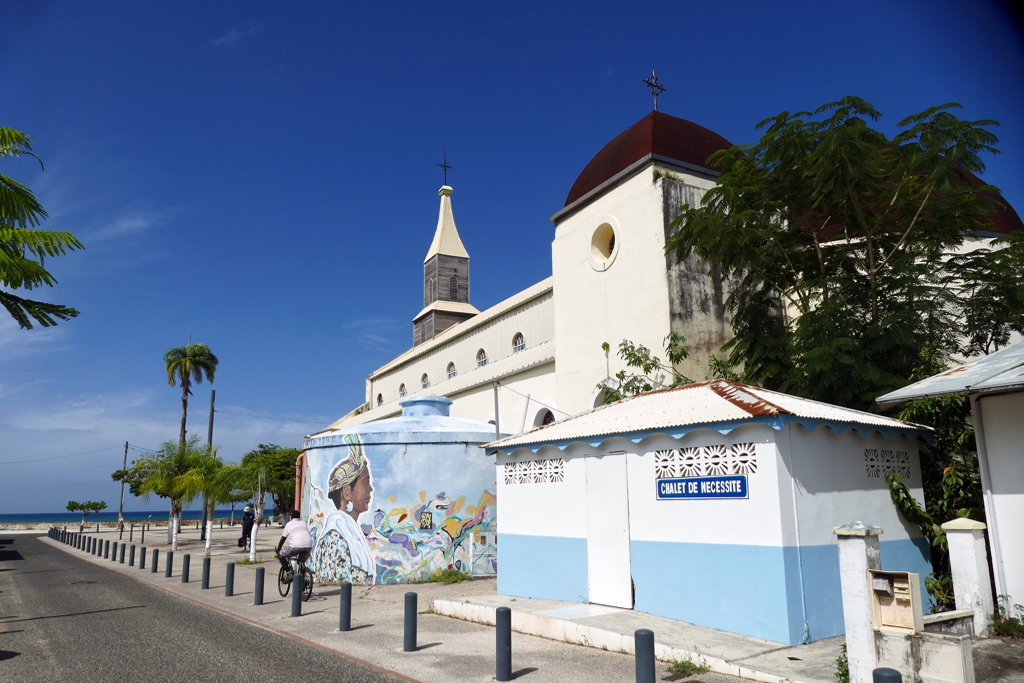
The Domaine de Beauport is located on the outskirts of town. It was one of the most important sugar factories in the French West Indies in the 19th century. Nevertheless, it was finally closed in 1990 and has been a museum ever since. The little train that once carried the cane from the fields to the factory is now taking tourists around the premises. For an entrance fee of 15 €uros, you can visit today’s Musée de la Canne from Tuesday to Sunday between 9 a.m. and 5 p.m.
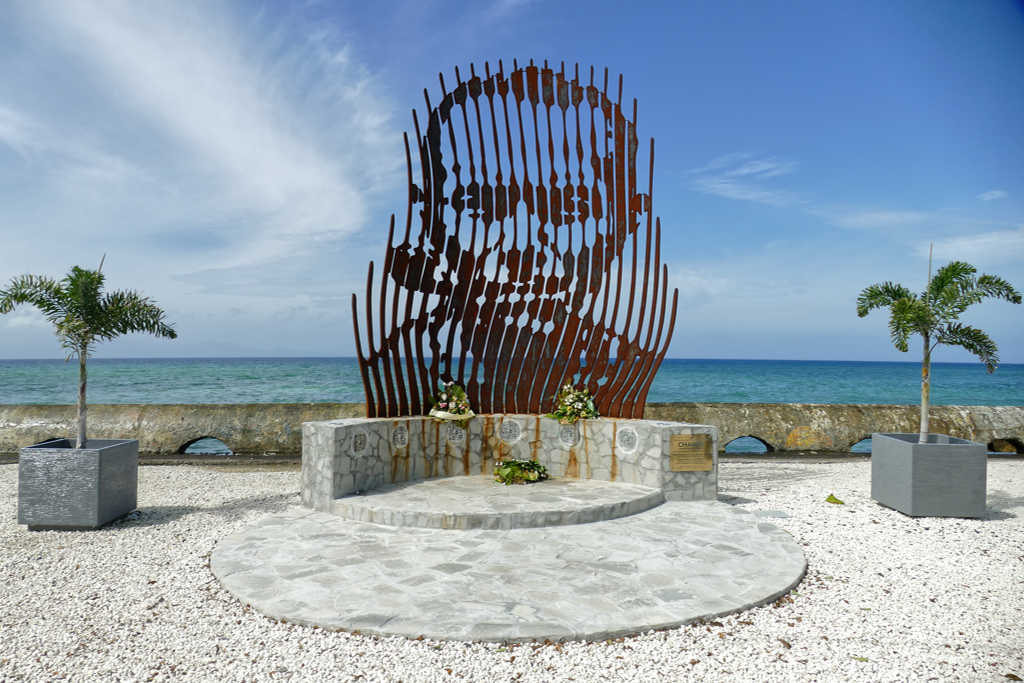
Port Louis has still a rather rural vibe to it. No wonder, sugar cane and fishing remain its main sources of income. Its most alluring feature, however, is the Plage du Souffleur north of the town’s center.
Plage du Souffleur
Dense vegetation grows alongside the beach and extends far down to the water. This way, everyone finds a place in the shade. There are also some open cabanas, called carbets, housing simple wooden tables and benches available free of charge.
Funnily enough, the part of the beach that is right next to the town of Port Louis is the quietest. The further north you go, the greater is the range of water games and sports activities on offer.
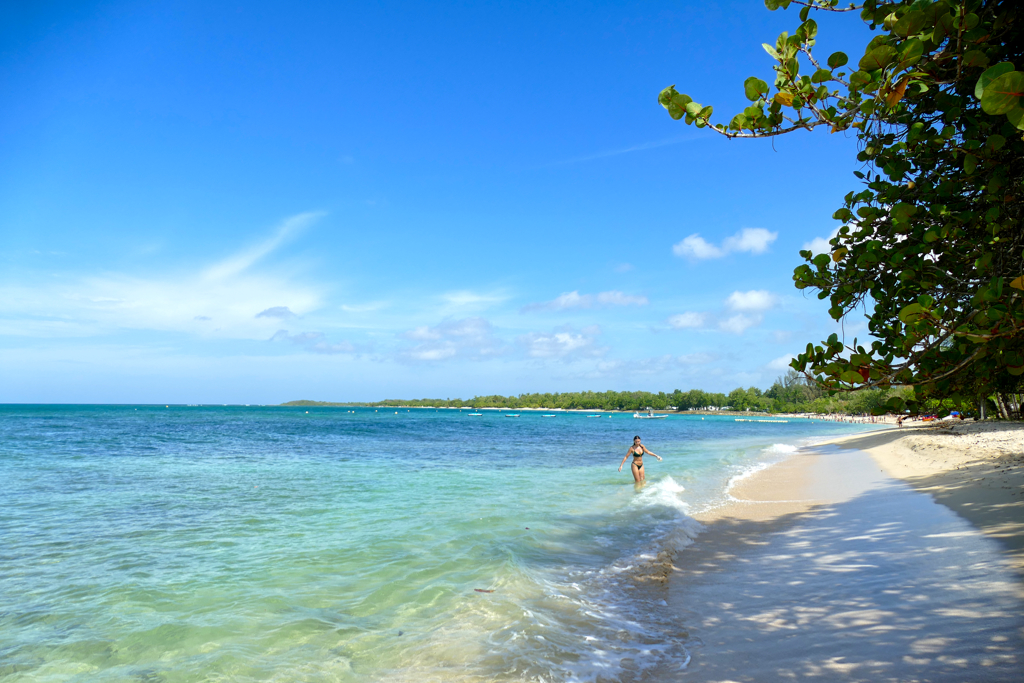
Nevertheless, over its entire length, the bay offers relaxed bathing pleasure in calm transparent waters. This makes Plage du Souffleur also perfect for families with small children who can play safely in the shallow water.
If you feel like taking a walk on the beach: At the northern tip of the beach is the marine cemetery of Port-Louis. Its tombs of sandy mounds decorated with conch shells are absolutely beautiful and unique.
How to Get Around
In general, the bus network in Guadeloupe is pretty well developed. I can’t think of any place that doesn’t have any bus service at all. What makes things a bit confusing at first is that there are two different companies.
Firstly, the company Karu’lis serves the city and district around Pointe-à-Pitre as well as the southern coast of Grand Terre. Their buses are easily recognizable as they are bright orange. You find lines, maps, schedules, and fares online on their website as well as on the Karu’lis App. There you can also charge money and pay for your tickets as you go. Otherwise, you can buy your ticket just as easily from the driver.
Keep in mind that Karu’lis buses stop their service on Saturdays around noon and that there is no service whatsoever on Sundays.
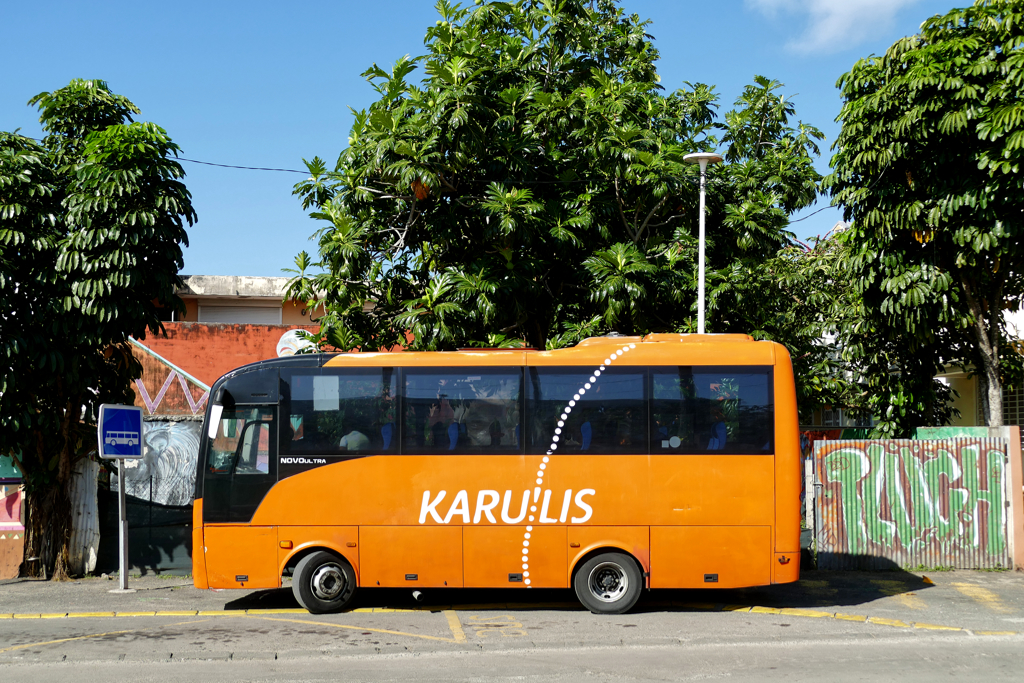
Now, while this sounds really easy and comfortable, I have to inform you that Karu’lis is serving exclusively the above-mentioned part of the island, hence, Pointe-à-Pitre all the way to Pointe des Chateaux.
But what if you want to go to Port Louis or Morne-à-l’Eau? And how about the entire part of Basse Terre?
Well, those are served by a different company. Fortunately, this company also has an excellent website where you find a system map and all timetables as comfortably downloadable PDFs. All you have to do is check on their system map which bus goes where and then look up the times on the respective schedule. Everything is marked in bright colors and sounds probably more complicated than it is.
To make things easier for you, I’m linking here to the timetables of bus #102 which is going to Petit Canal and Port Louis as well as #101 going to Le Moule respectively #111 going to Saint François via Le Moule. They are both on the same sheet.
However, you’ll find these and all the other lines on their website.
Do Your Research
While this other bus company is at least as good and reliable as Karu’lis, it has two major flaws: Firstly, there is no App, you have to get all the info from their website. I actually recommend printing out all the schedules before your trip. Don’t worry, there aren’t that many.
The other problem is that they aren’t on Google Maps. So while you can look up the bus from Pointe-à-Pitre to Sainte Anne on Google Maps just like you’d look for a connection in Paris or London, you cannot do that for the other buses. This does not mean they are less reliable, you only have to check all your connections on their website.
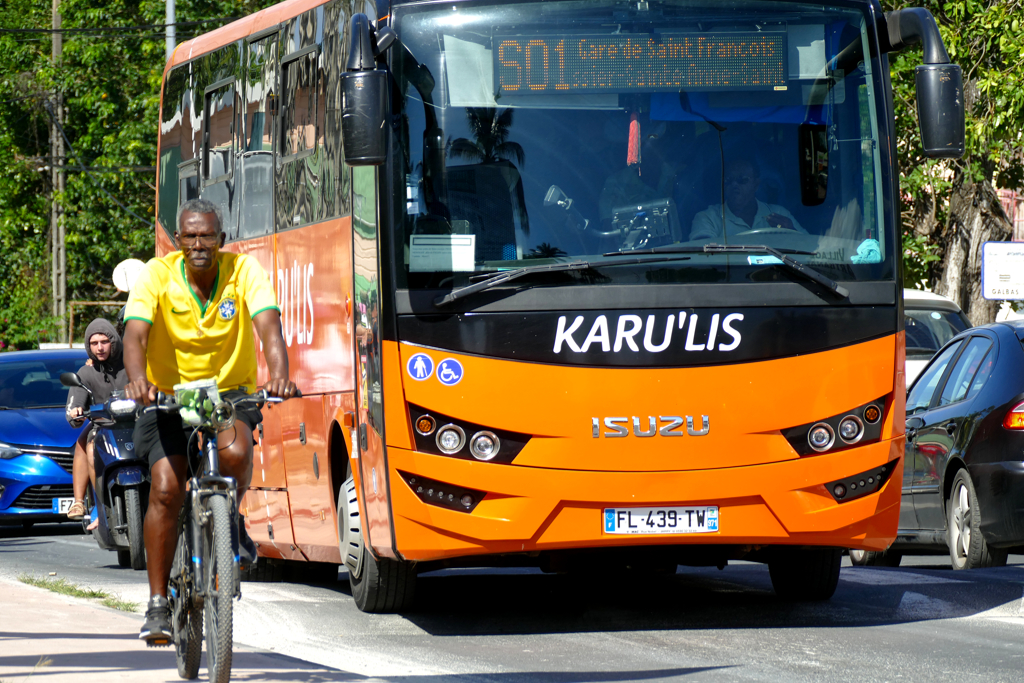
One last but very important thing: To go places that Karu’lis isn’t serving, you basically always have to change buses in Pointe-à-Pitre. There are very few exceptions to this rule. However, it is important to know that Karu’lis’ coaches are going to the Gare De Darboussier east of the port basin while all the other coaches – even those going to the north and the northeast coast of Grand Terre – are leaving from the Gare Routière de Bergevin located close to the cruise terminal. Don’t look for it on Google Maps, they will send you to a roundabout about twenty minutes north of the correct bus terminal. Believe me, been there, done that.
Obviously, you’ll find the Bergevin terminal’s correct location in the map I created below.
These two bus terminals are about a 20-minute walk from each other, so keep that in mind when planning your trip.
Seven Tips For Exploring Guadeloupe By Public Bus
- The most important tip to make your bus ride more enjoyable: Don’t look at it as a wasted period of time between two meaningful activities. No, think of it as an original tour in an authentic vehicle: Enjoy the amazing scenery, the turquoise waters, the endless sugarcane fields, and the swaying palm trees.
This is neither New York nor Paris nor Tokyo, this is a Caribbean island, and the bus ride is part of the whole experience. - Don’t plan too much for one day. One or two destinations will be enough. Yes, in cities like London or Berlin, you can design a meticulous program for the day and follow through. Taking a day trip on public buses in Guadeloupe is more complex and at times also tiring: you’ll be walking quite a bit and you’ll have to carry all sorts of stuff with you. And all this in the tropical heat. Believe me: Less is definitely more.
- However, plan your trip as thoroughly as possible in advance by checking and downloading the timetables from the Région Guadeloupe’s website as well as Karu’lis’ website and by checking connections on Google Maps or the Karu’lis App wherever possible.
- Be at the stop at least ten, better 20 minutes before the scheduled time as coaches tend to arrive far too early.
- While waiting, don’t get distracted by reading or chatting with others. Keep your eyes on the road if the bus is coming. Because if you just hang around at the bus stop, the driver won’t consider you a potential passenger and might just merrily pass you by. As soon as you see the bus approaching, give the driver a sign by lifting your arm or waving.
- Make sure to have small change to pay your fare as the drivers accept only bills up to 10 €uros.
- Never rely on the last possible connection or the latest scheduled coach. Plan your trip in a way that you can take at least one later bus.
Organized Trips
As I pointed out, you can get to most of Guadeloupe’s wonderful places by public bus. However, this will cost you some time and possibly a lot of nerves. Hence, an organized tour might be a more suitable option, especially if you don’t have much time on the island. Also, if you want to visit the smaller islands, and engage in activities on the water like sailing or snorkeling from a boat, you have to go on a tour unless you bring your own yacht. Therefore, here are some great tours to choose from*:
Where to Stay
All things considered, your lodging choice should primarily depend on what you are planning on doing. Also, you are obviously more flexible if you’re renting a car which I didn’t.
If you are planning on spending most of the time on Guadeloupe’s marvelous beaches, you’ll probably opt for a town with a Plage du Bourg, a city beach. Since Grande Terre is the more touristy wing of the island, you’ll find many different options to choose from: You can stay in a posh resort or a fancy villa in Le Gosier or a self-catered no-frill apartment in Sainte Anne. You can spend a fortune on all-inclusive resorts such as Club Méditerranee at the dreamy Caravelle beach or enjoy the wild nature in a cabin in the hinterland.
The choice is all yours.
As for me, I wanted to be within walking distance of a beautiful beach. At the same time, I wanted to be close to the public bus system. Therefore, renting an apartment at Chez Janou was a good choice.
At the end of the day, it totally depends on your preferences and your budget if you choose a luxurious room at a fancy resort or if you go for a cozy apartment rented out by a local. Either way, you can check out the availability and prices of various lodging options around Guadeloupe on this map*:
What to Eat
Caribbean cuisine combines the culinary traditions of all the peoples who have lived in the region. That sounds like a pleasant mix of cultures, but we all know how this often involuntary migration came about. Whatever the case, Creole cuisine is a vibrant mix of African, French, and Asian dishes. It combines lots of spices and different flavors.
Guadeloupeans, however, seem to be very much into snacks’n’starters. The most famous dish is actually a fried sandwich stuffed with whatever your heart’n’stomach desires. The second favorite one is Agoulou. It is a quite large brioche bread filled with a wide variety of fillings.
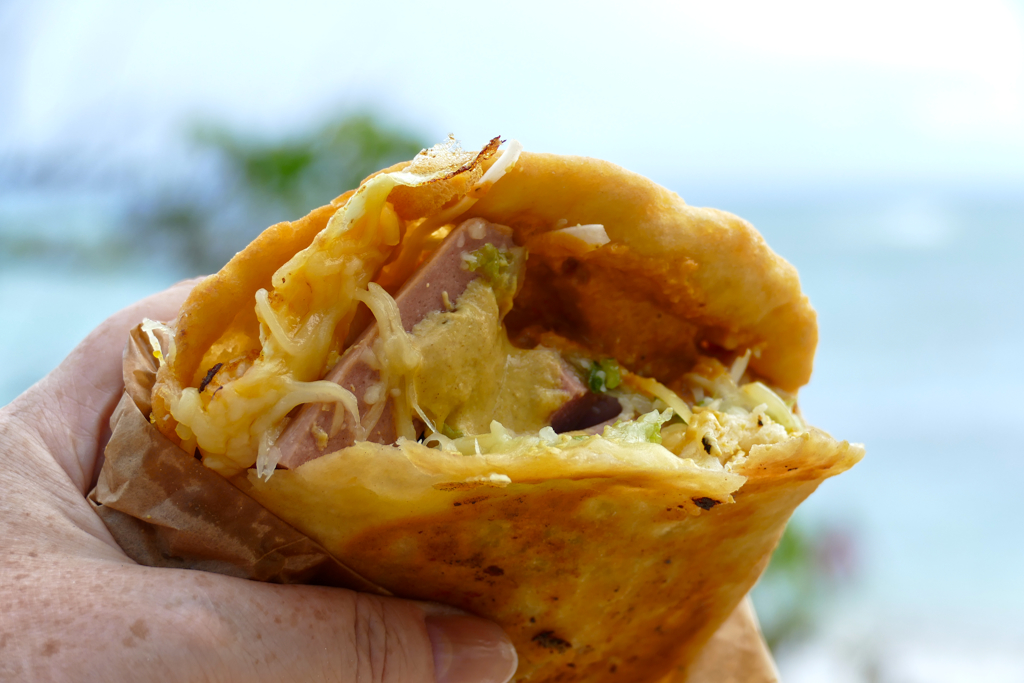
A must-try starter is Accras, small fritters with cod, shrimp, or vegetables. You know that the cook knows his trade when they are crispy on the outside, yet inside still soft and creamy. Other popular starters are stuffed crabs and boudin, a local sausage. There are various kinds like the one made of bacon and pig’s blood or an even more exotic one made from seafood. Many restaurants offer varied starters in one platter to try.
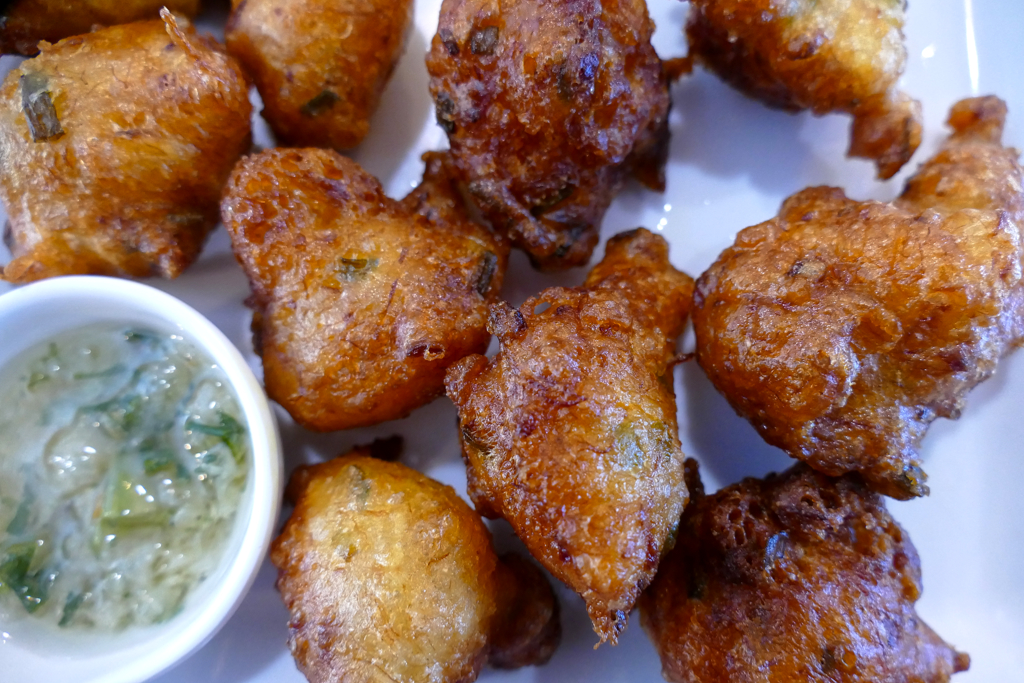
Now let’s continue with the most iconic main courses. Obviously, there is lots of fish and seafood, we are talking about an island, after all. But the traditional cuisine also includes meats, mostly chicken. It can be grilled on charcoal in cut-open barrels or smothered in a spicy curry sauce called Colombo, to name just two variations.
Quick Snacks
Obviously, you can eat at many classic restaurants. However, don’t underestimate the many fast food eateries and Rôtisseries that you’ll find in towns’n’villages. Albeit, the term fast food is misleading since these snack bars cook their delicacies actually with lots of love and time before they keep them hot on a counter so you can grab a quick lunch. A downside might be that you can enjoy these delicious meals solely at lunchtime.
One good thing about French influence is the countless bakeries that you find in every town and even the smallest village. Baguette, croissants, pain au chocolat, chausson aux pomme that literally melt in your mouth. Yes, just like in France. There are also quiches, puff pastries filled with minced meat, and juicy sandwiches. In any case, your snack for the beach day is ready and waiting for you at your local boulangerie!
Finally, don’t forget to stock up on fresh fruits. You’ll be amazed how much better they taste if they just fell from a tree instead of travelling thousands of miles to your local supermarket!
For stories and information on other parts of Guadeloupe, check out my posts
The Best Beaches in Guadeloupe You Can Easily Visit by Public Bus
GUADELOUPE: Complete Guide And Perfect Itineraries (also for travels by public bus)
Best Street Art in GUADELOUPE
Guadeloupe: What Not to Miss on a Visit to the Island of Marie Galante
Best Places to Visit in Basse Terre, the Western Wing of GUADELOUPE (also by public bus)
For general information on the island of Guadeloupe, go to the main post
Grand GUADELOUPE: Complete Guide And Perfect Itineraries (also for travels by public bus)
There, you’ll find comprehensive information and tips that will make your trip much smoother and more enjoyable.
Map
On this map, you can see where all the mesmerizing places I’m introducing in this post are located.
Clicking on the slider symbol at the top left or the full-screen icon at the top right will display the whole map. Then, to switch between the individual areas, just open the legend at the left upper corner and you can hide or unhide the respective layer as you wish. This way, the map will show only the section you really need and be more clear.
Pinnable Pictures
If you choose to pin this post for later, please use one of these pictures:
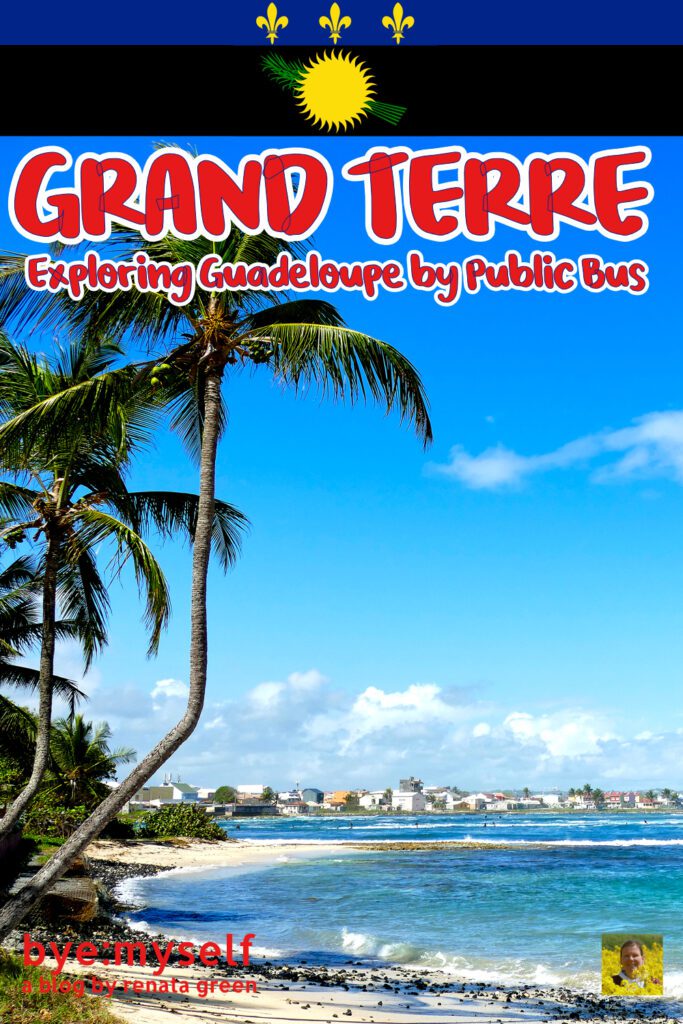
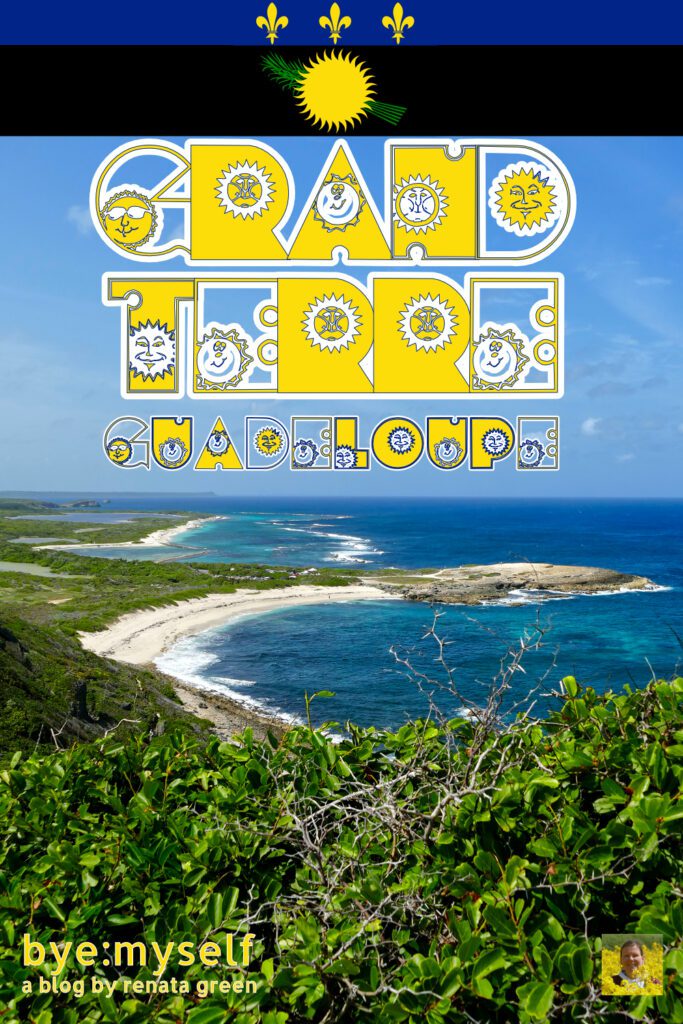
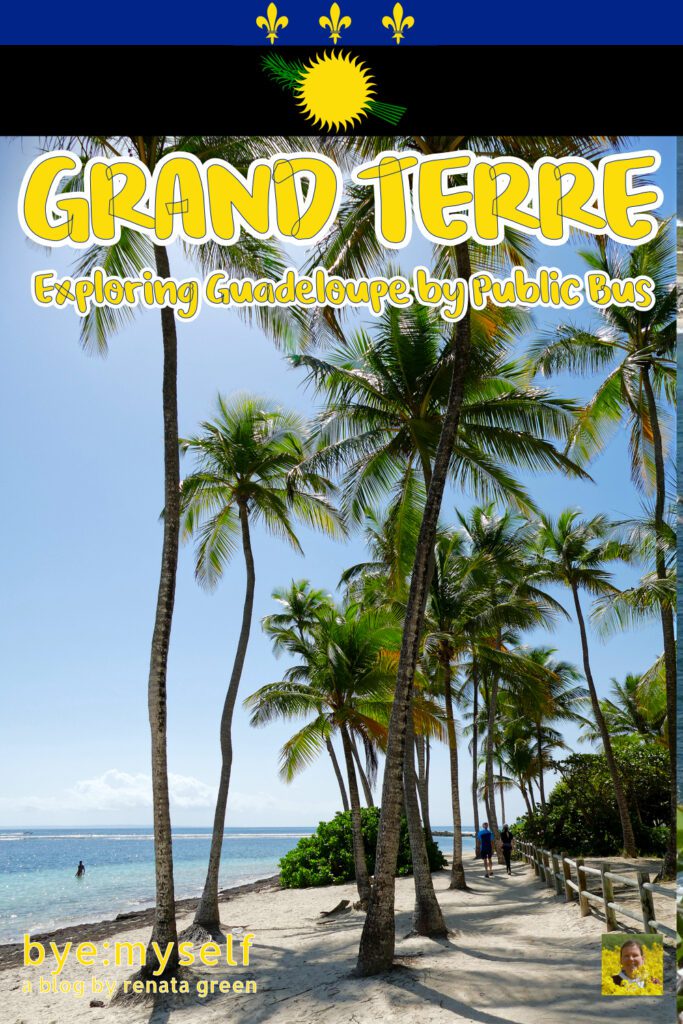
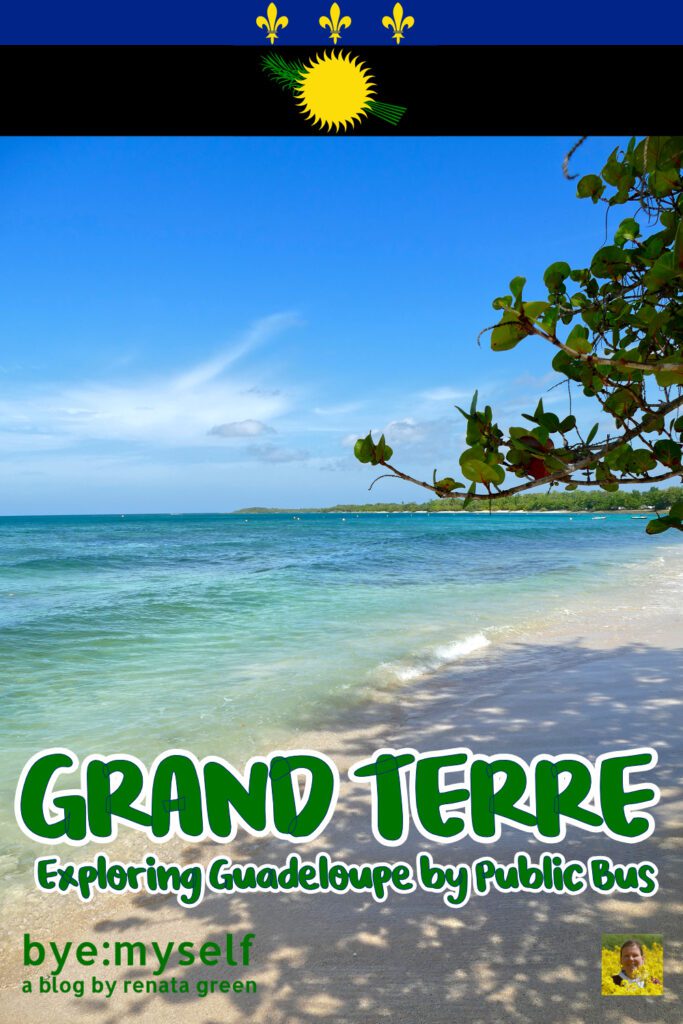
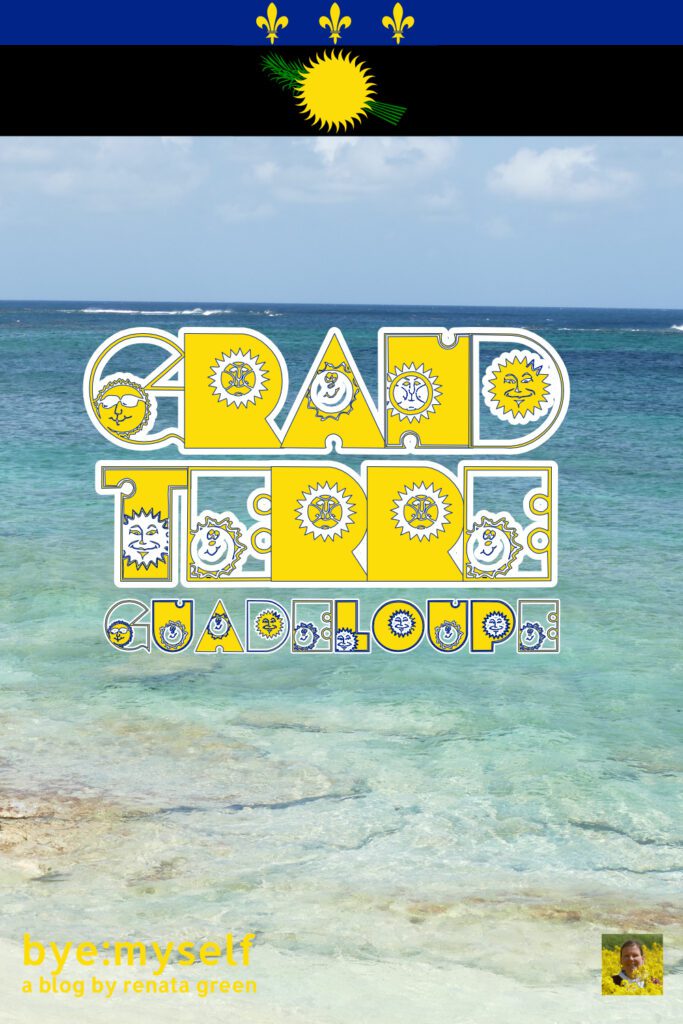
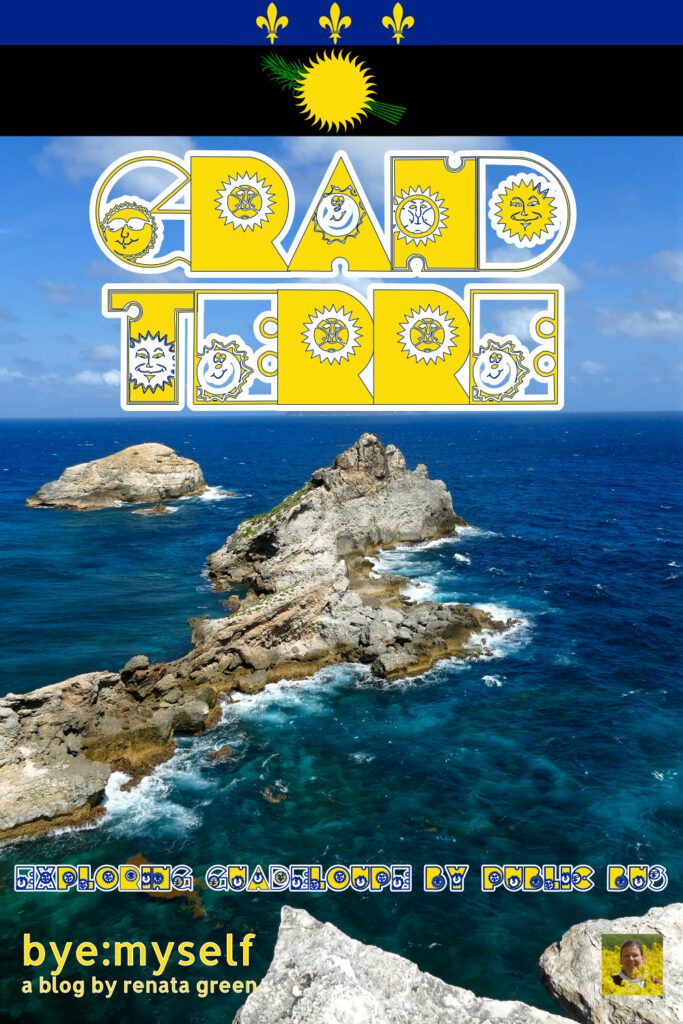
Note: I’ve thoroughly completed, edited, and updated this post in May 2025.
Did You Enjoy This Post? Then You Might Like Also These:
The Best Beaches in Guadeloupe You Can Easily Visit by Public Bus
Murals in CURACAO: The Best Street Art Projects in Willemstad
Guide to HAVANA – Welcome to the Club
Guadeloupe: What Not to Miss on a Visit to the Island of Marie Galante
The Best Street Art in MARTINIQUE
Best Places to Visit in Basse Terre, the Western Wing of GUADELOUPE (also by public bus)
MAGNIFICENT MARTINIQUE: Ten Places Not to Miss on Your Visit (even when exploring by public bus)
What Not to Miss in BRIDGETOWN, Barbados’ Exciting Capital
* This is an affiliate link. If you book through this page, not only do you get the best deal. I also get a small commission that helps me run this blog. Thank you so much for supporting me!
** Pousse Pousse – Ti Balad Peyi was kind enough to let me join one of their tours for free. Nevertheless, all opinions on their services are mine and were by no means influenced by the company.
